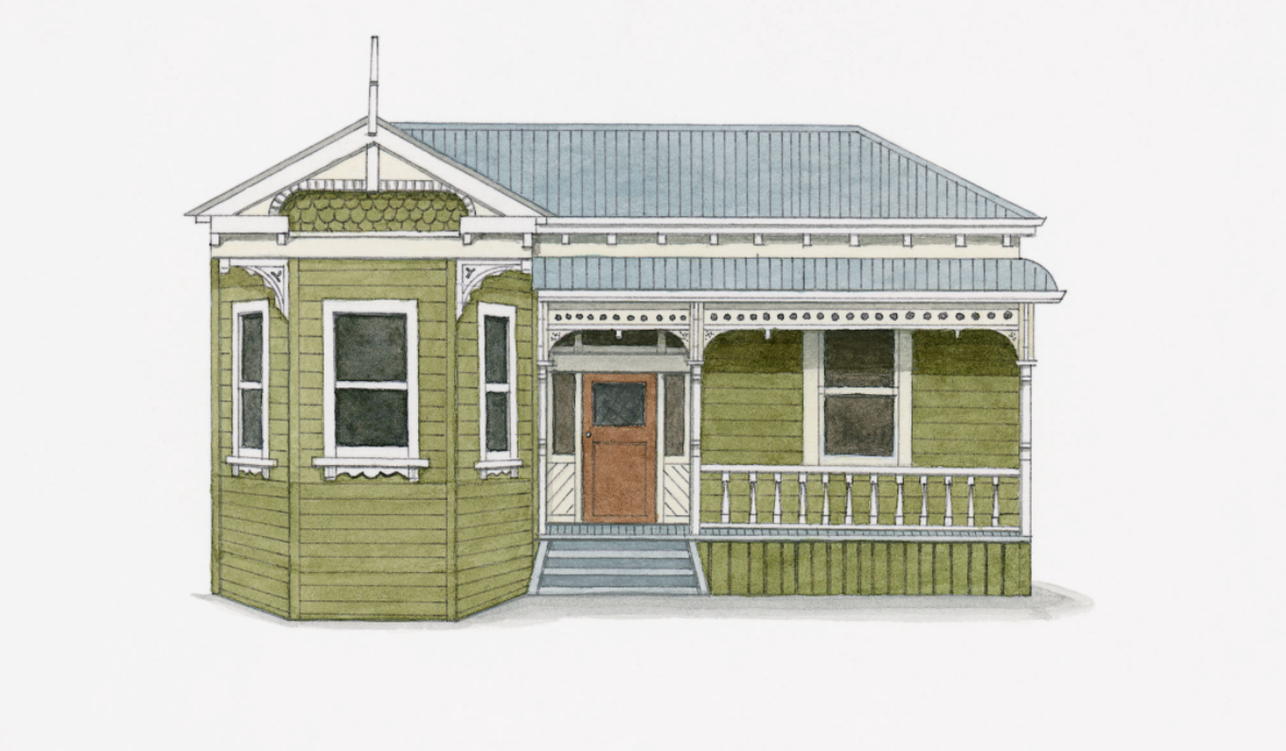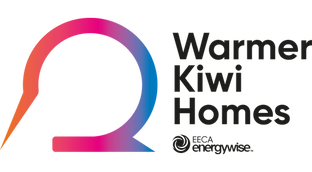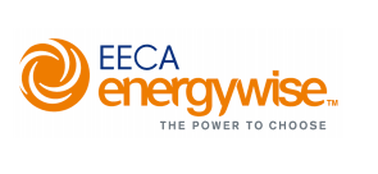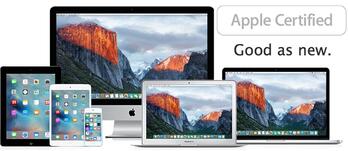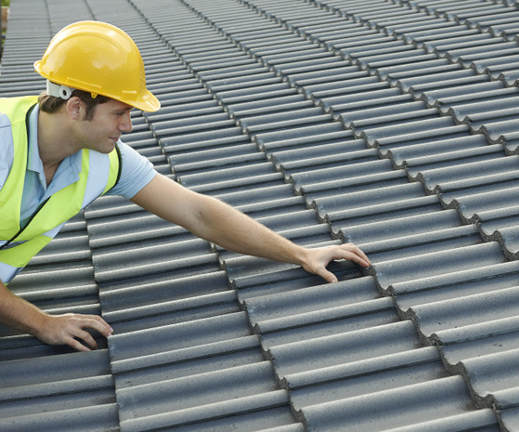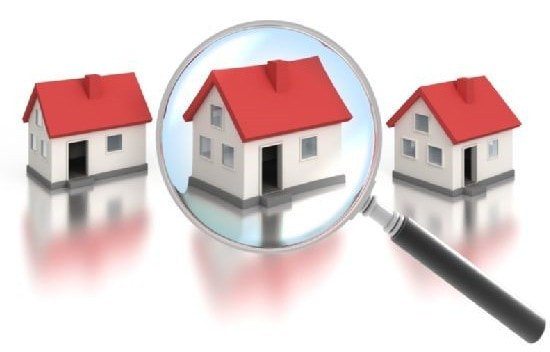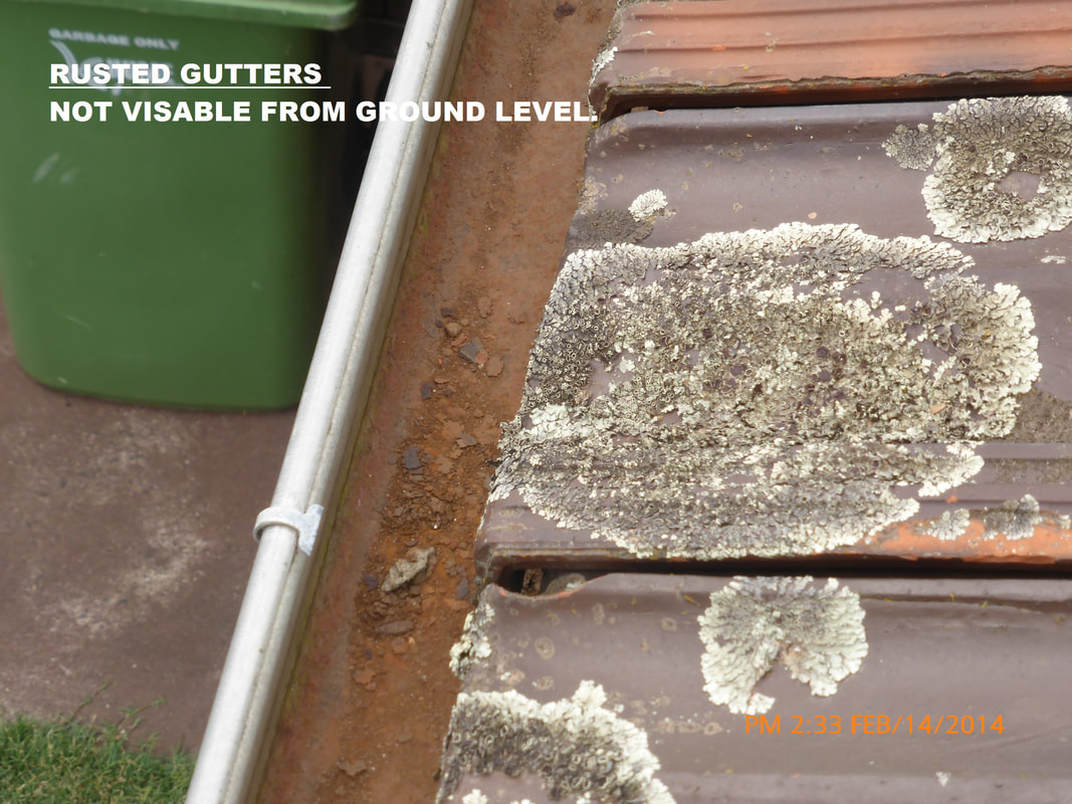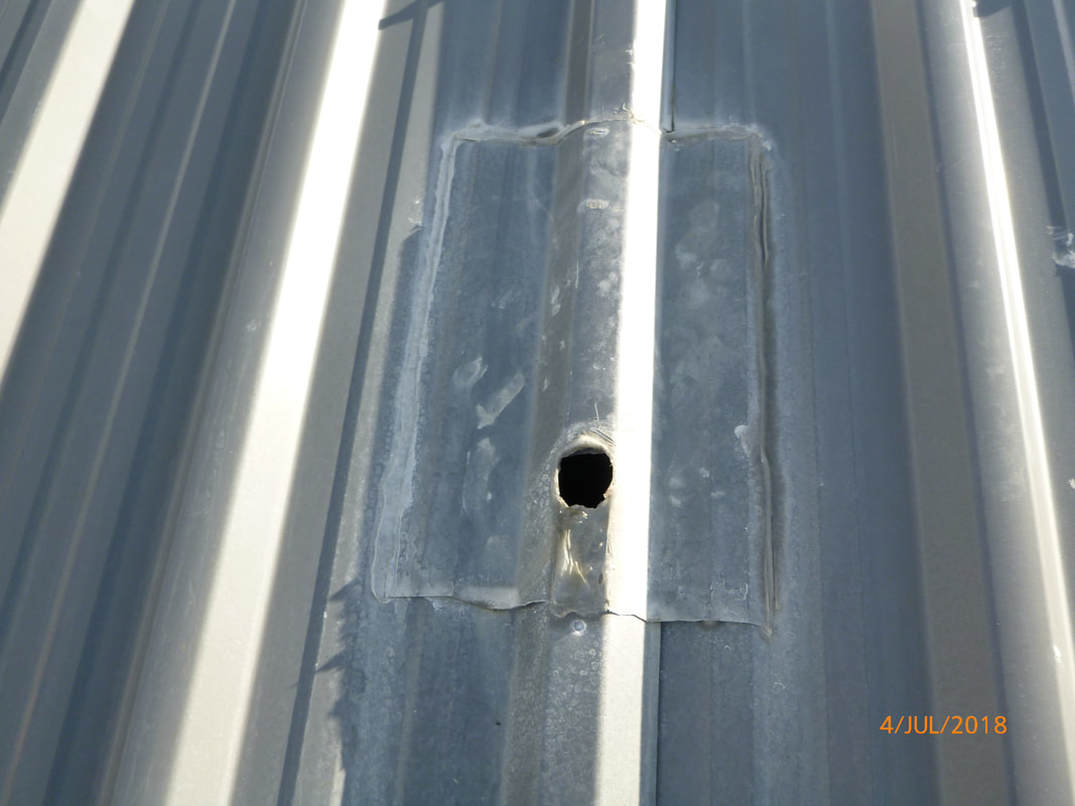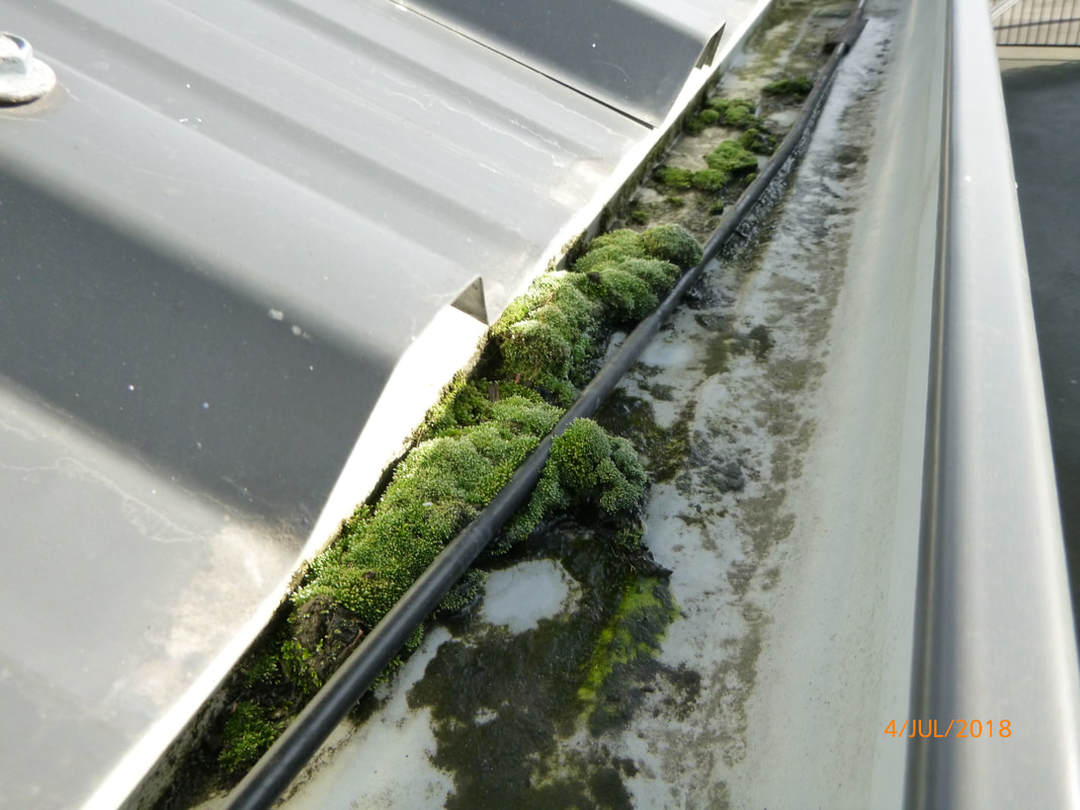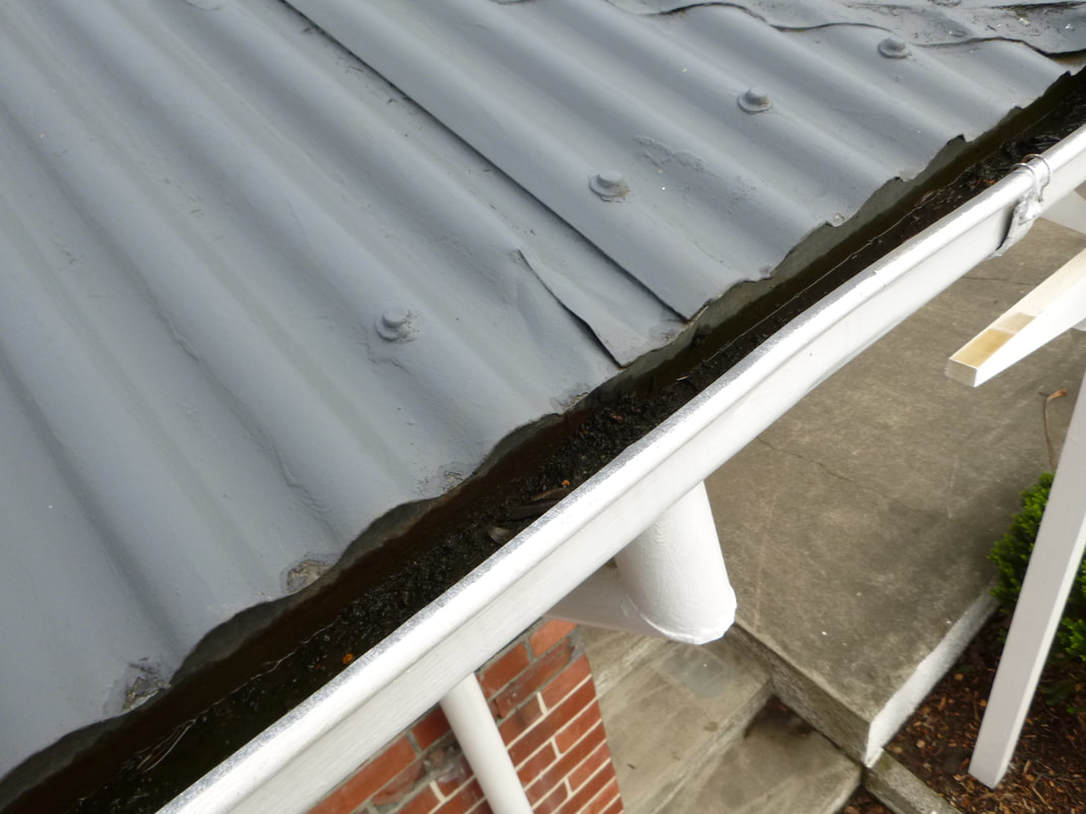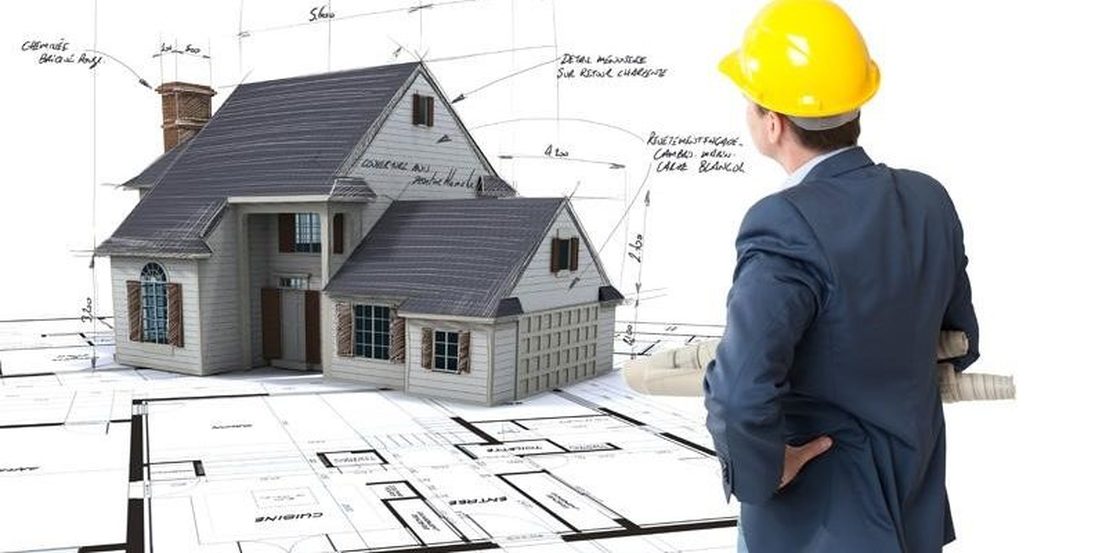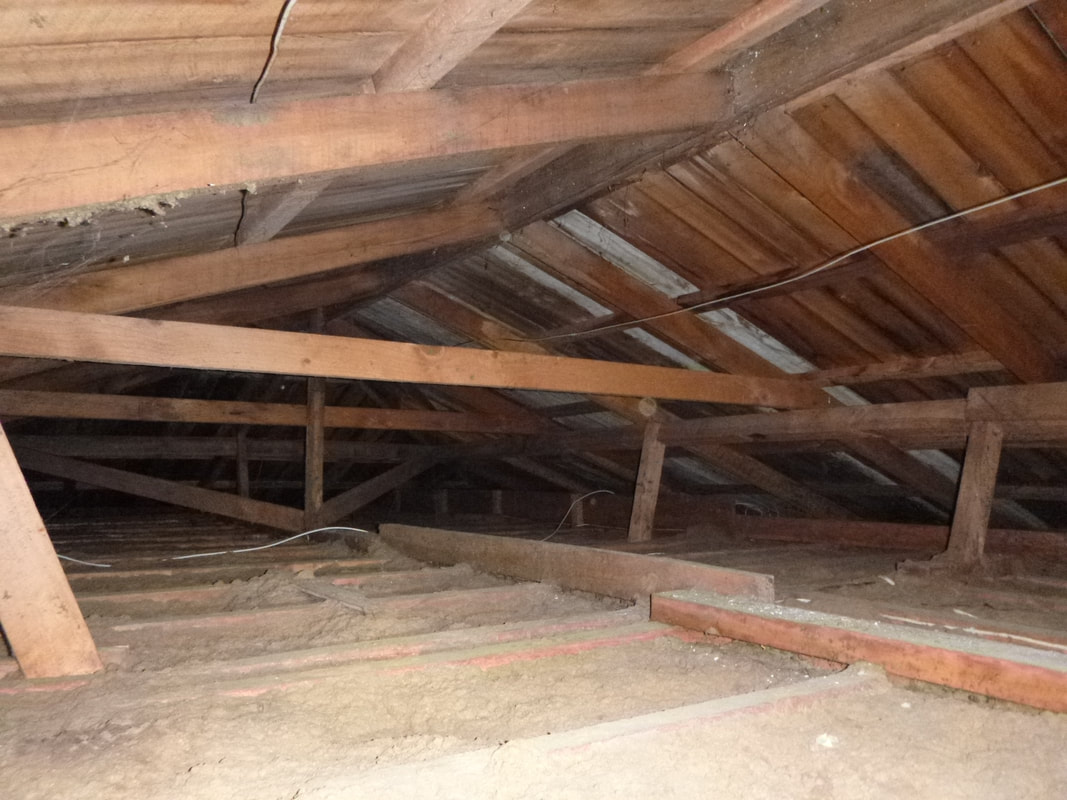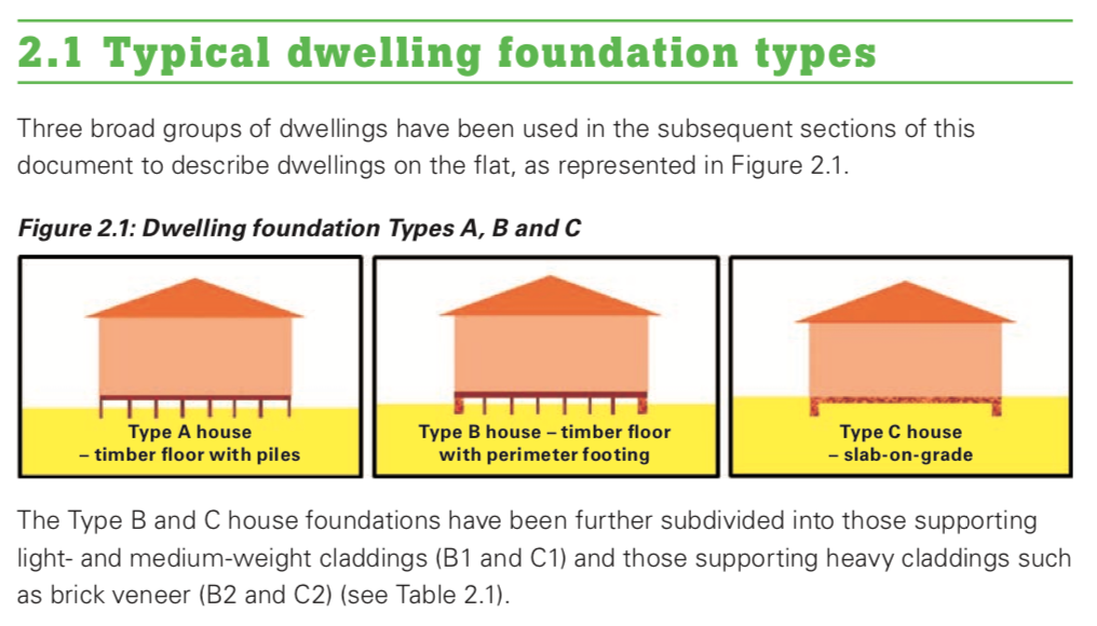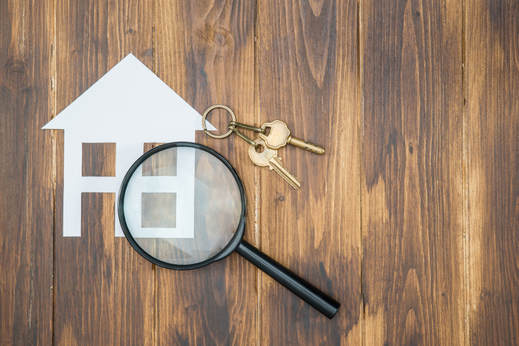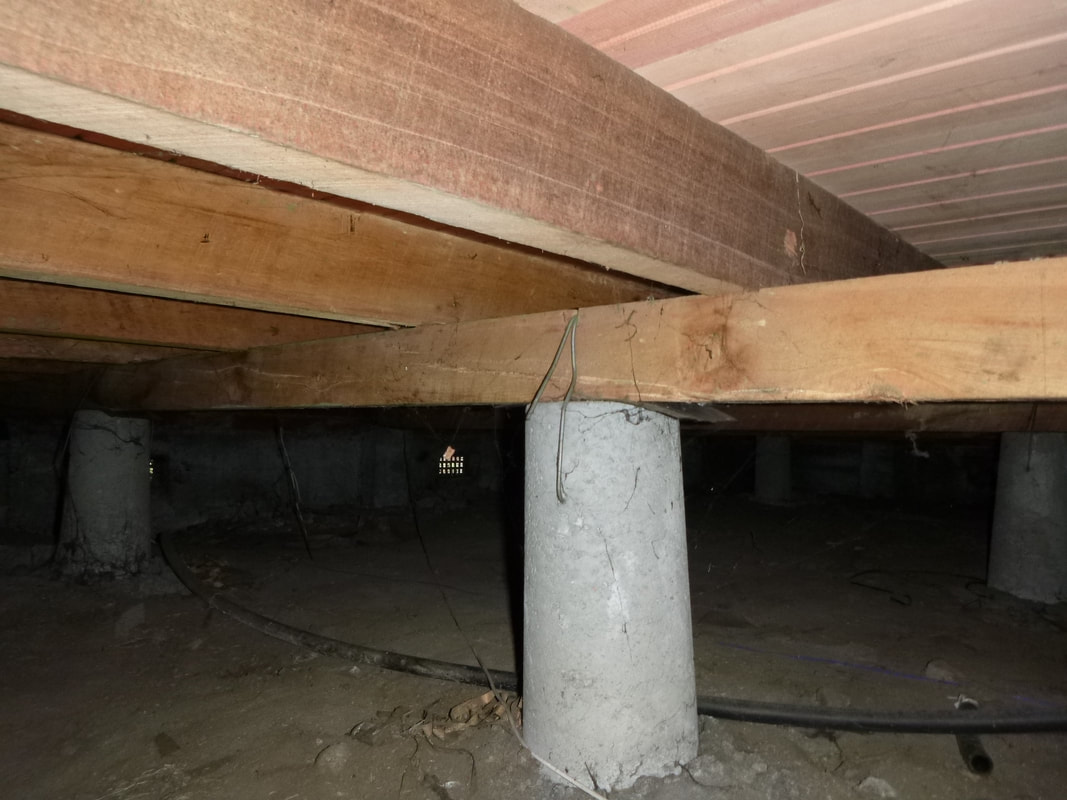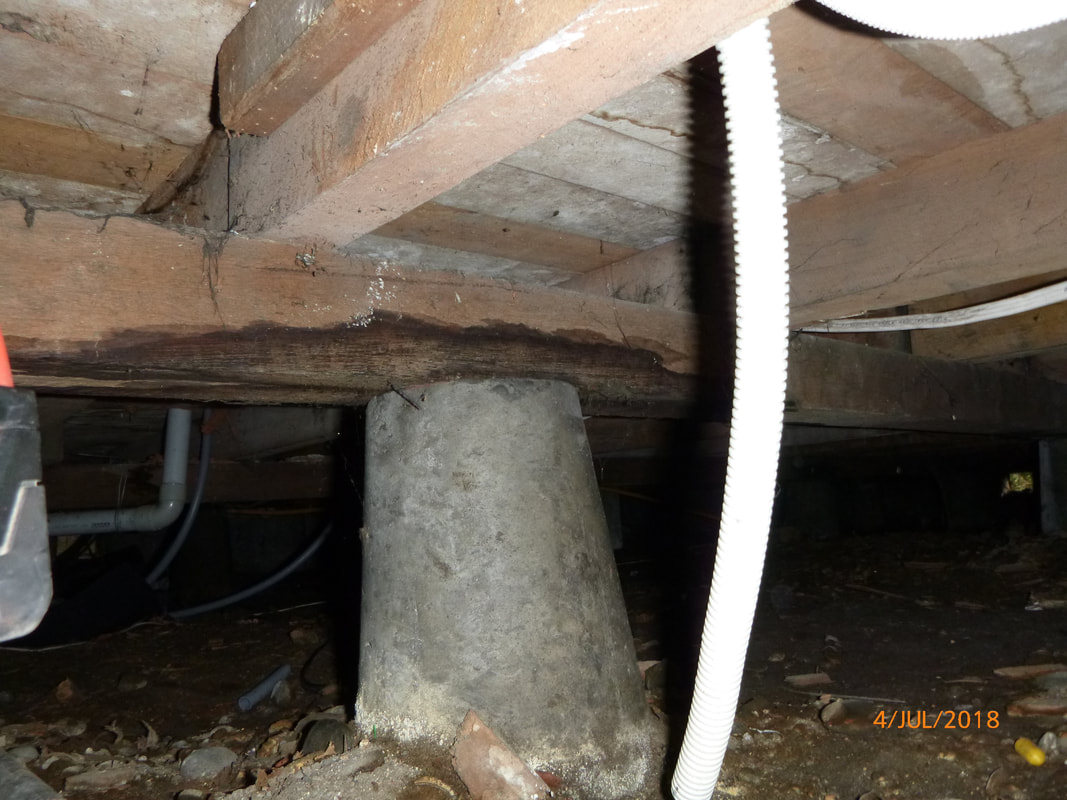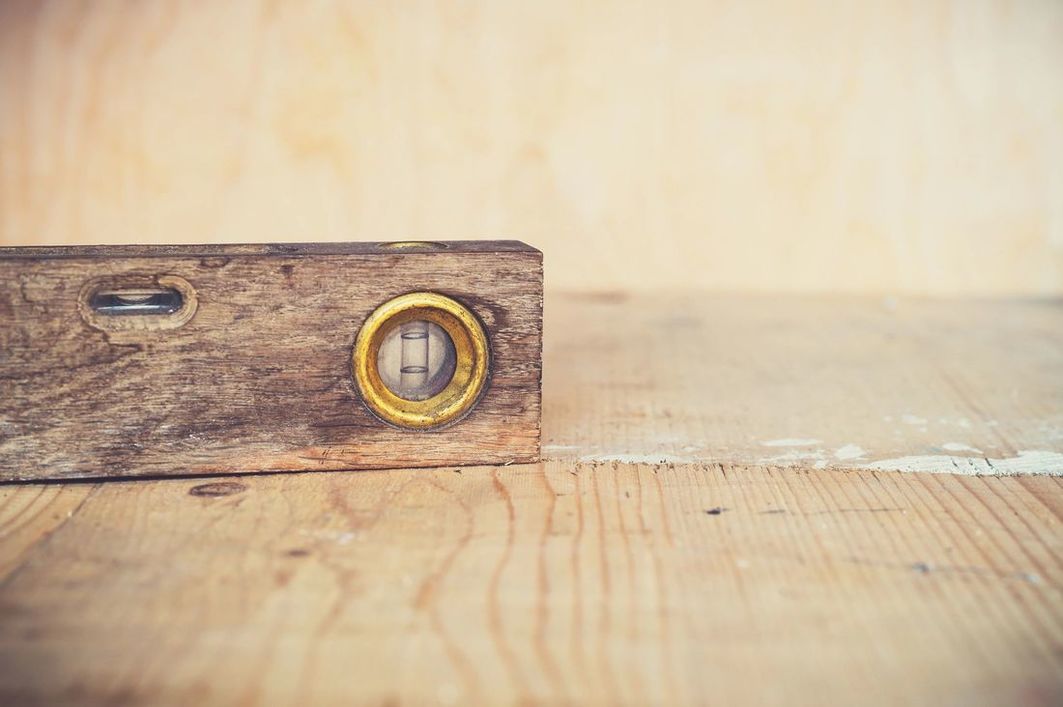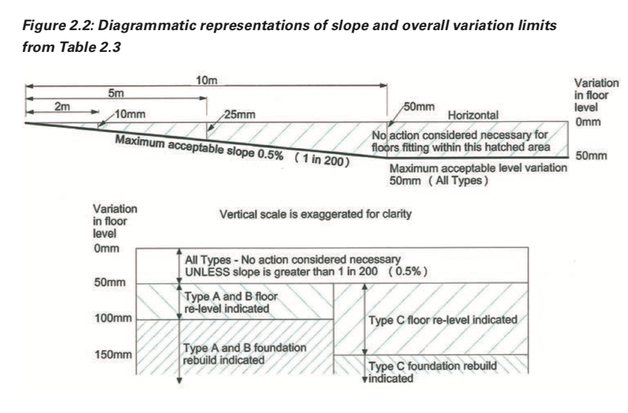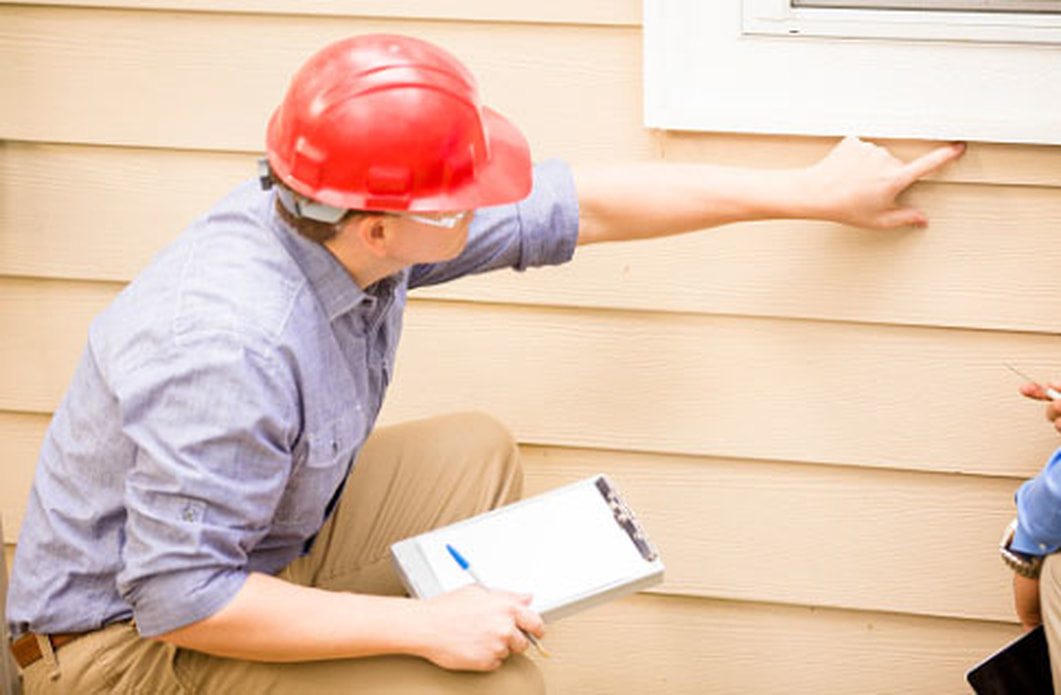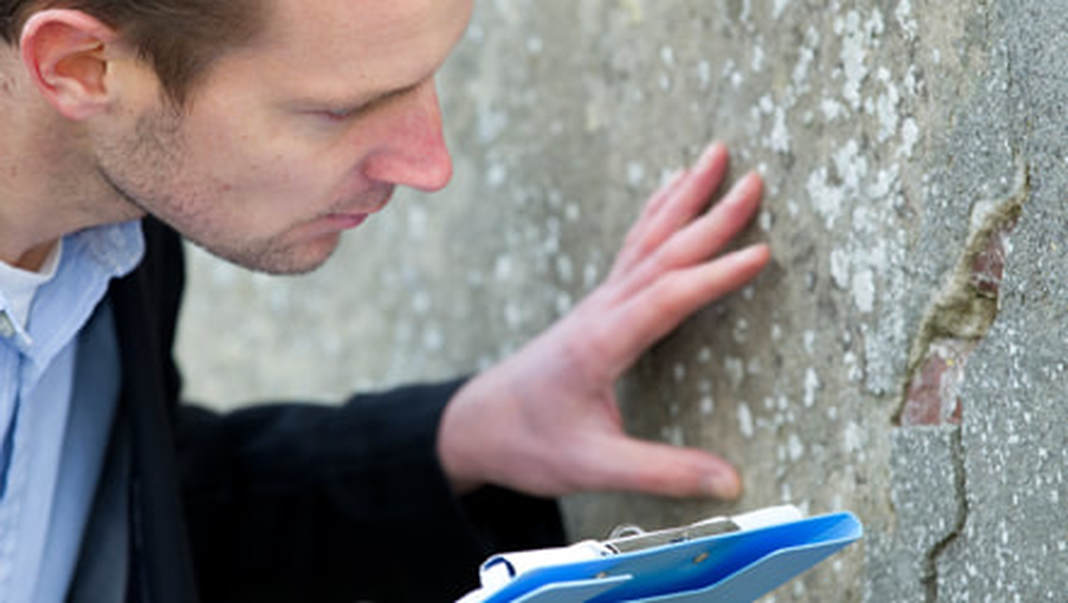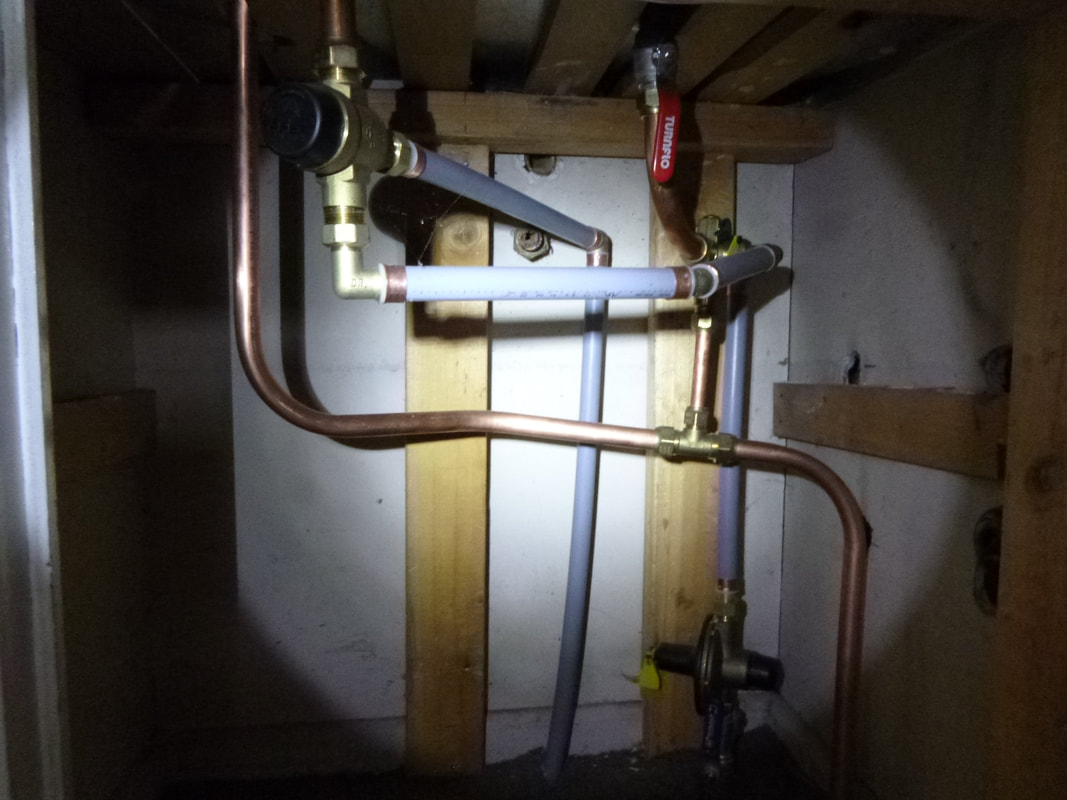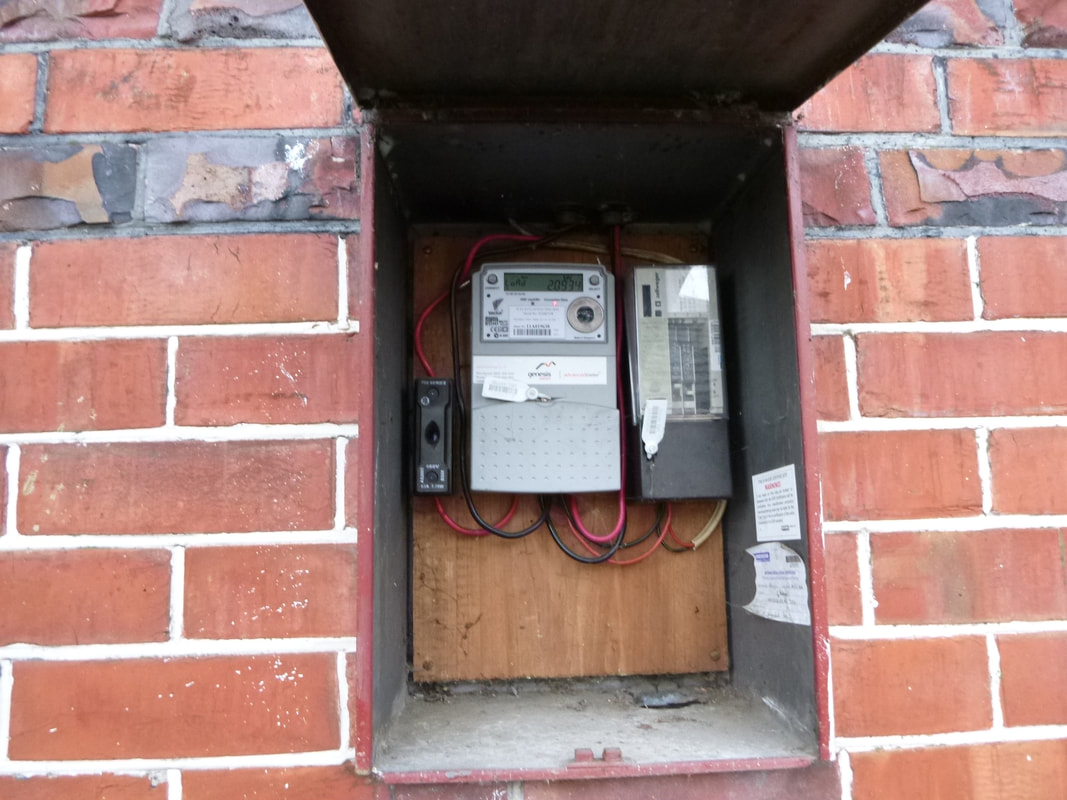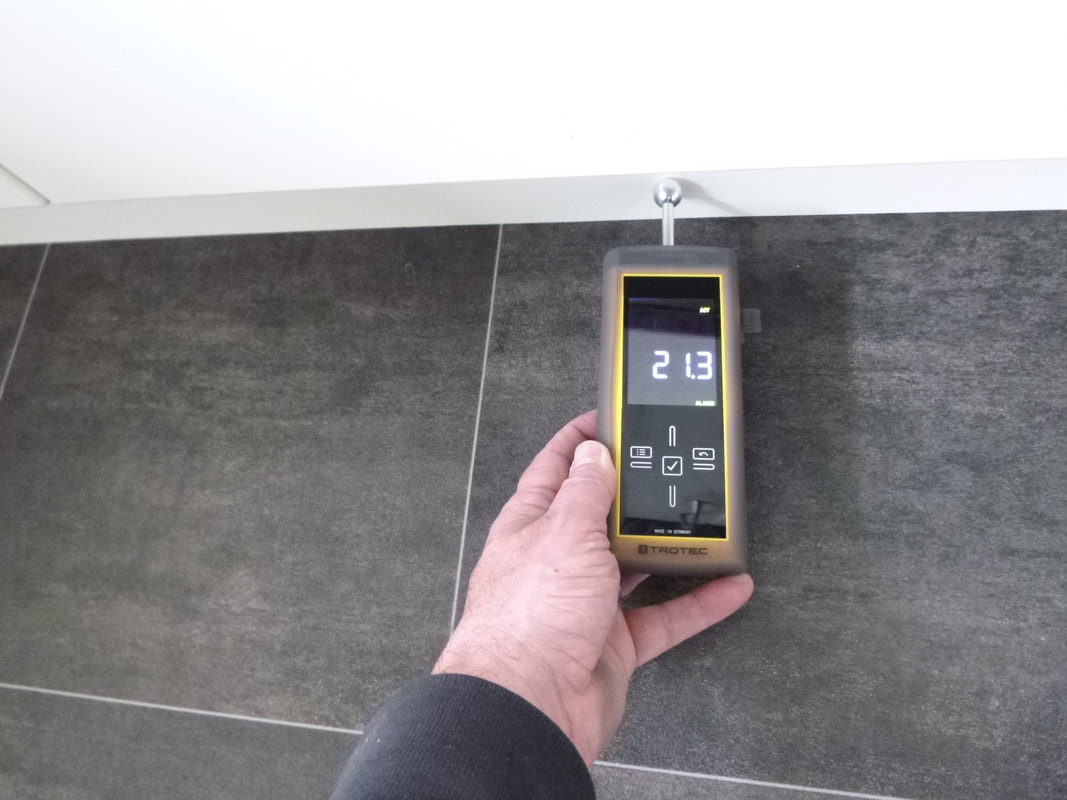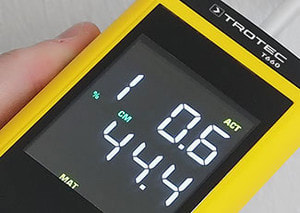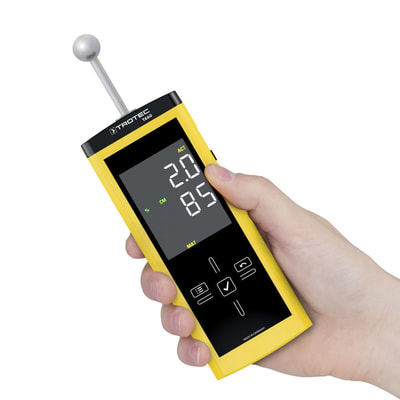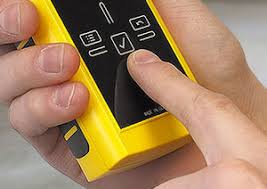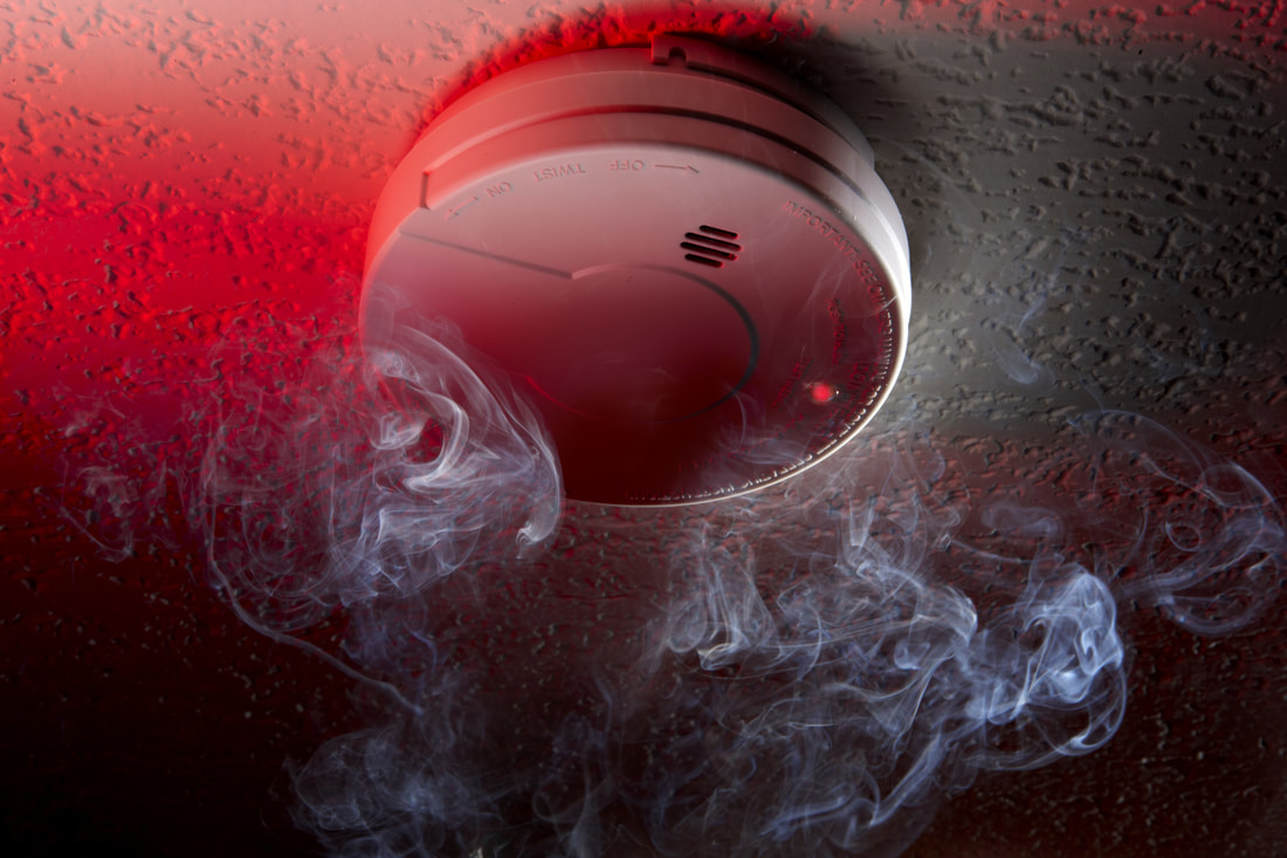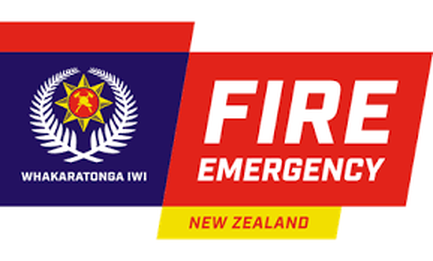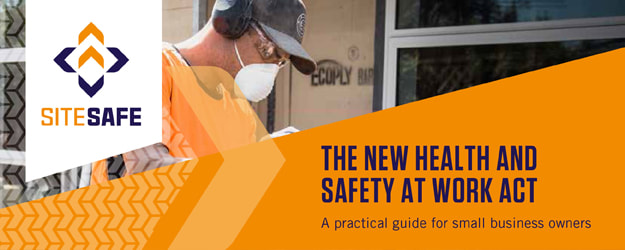Information
Safe as houses? Not always? What to look out for?
Understand the most common building issues associated with the age of the property in New Zealand.
This report highlights the some of the most common building issues and risks. We recommend you research further, before making an offer.
Buildings built before 1914
Issues to look out for:
Wooden villas were the most popular design style in this period. The bungalow style started to appear in New Zealand from 1910. A home built before 1914 will have plenty of history and character features, but it can also come with issues if it hasn’t been properly maintained over the years.
Building exterior and cladding - Timber
Issues to look out for:
Timber — including treated plywood and engineered wood products. A wooden exterior or cladding needs ongoing maintenance, and there may be problems if it hasn’t been properly and regularly maintained.
Extensions and renovations
Check that any extensions or renovations have building consent.
You can check by comparing the current layout with the floor plan on the property file held by the council. Any differences between the two should have the proper building consents. If the owner or a previous owner has added a deck, garage or sleepout, check that the consents are on file.
It may be possible to get building consent on an extension or renovation after you have purchased the property, but it is not certain and it could be expensive if extra work is needed to meet required standards.
Check the foundations of the extension. If the foundations are different from the rest of the house, they may move in different ways in an earthquake. Also check that the foundations and the connections between them are in good condition.
Work that should be consented
Building work that may require consent includes:
Roof material - Iron and steel
Issues to look out for:
Iron and steel — including corrugated and long-run. These roofs last between 40 and 70 years, depending on what they’re made of, the environment and regular maintenance. An iron or steel roof will need to be repainted or re-chipped every 10 years to ensure the roof remains watertight.
Property on a hillside slope
Property hazards - Earthquake Damage, EQC and Liquefaction
These features can make some buildings more susceptible to liquefaction-induced damage.
50 and 100 Years Council Flood Management Plan
Issues to look out for:
Types of Home Ownership
Freehold Is also known as fee simple and is the most simple and common ownership type in New Zealand.
If you have a freehold property, you own the land and (generally) anything built on the land unless there are any registered or unregistered interests. Examples of interests that might restrict the use of the property include:
Ask your lawyer or conveyancer to review the record of title (also known as the certificate of title), which contains the property’s legal description, details of its ownership and the rights and/or restrictions registered against it.
Cross-lease property, you own two interests in the property — a share of the freehold title in common with the other cross-leaseholders and a leasehold interest in the particular area and building that you occupy.
A cross-lease title may include a plan showing the footprint of the building you are entitled to occupy (sometimes called the flats plan). Check the plan to identify:
This means that, depending on the terms of the cross-lease, you may need to obtain the other owners’ consent before painting the exterior or making other non-structural changes to the building you occupy or before making structural changes, for example, building a deck or putting up a fence. There may be restrictions on what you can do with the property under the terms of the lease registered on your title.
Ask your lawyer or conveyancer to review the record of title (also known as the certificate of title), which contains the property’s legal description, details of its ownership and the rights and/or restrictions registered against it.
What you can do if you have questions about a property:
Buildings built between 1914 and 1929
Issues to look out for:
For more information:
Buildings built between 1930 – 1939
Issues to look out for:
For more information:
Issues to look out for:
For more information:
Buildings built between 1960 – 1969
Issues to look out for:
Building exterior and cladding
Brick Cladding
Issues to look out for:
Extensions and renovations
Check that any extensions or renovations have building consent.
You can check by comparing the current layout with the floor plan on the property file held by the council. Any differences between the two should have the proper building consents. If the owner or a previous owner has added a deck, garage or sleepout, check that the consents are on file.
It may be possible to get building consent on an extension or renovation after you have purchased the property, but it is not certain and it could be expensive if extra work is needed to meet required standards.
Check the foundations of the extension. If the foundations are different from the rest of the house, they may move in different ways in an earthquake. Also check that the foundations and the connections between them are in good condition.
Consents Required
Building work that may require consent includes:
Chimneys Brick and masonry chimneys may crack, shift or collapse in an earthquake, causing injury to people and damage to property. Chimneys can topple or collapse through the roof or fall outwards, damaging other parts of the property.
Chimneys
Issues to look out for:
For more information:
Buildings built between 1950 – 1959
Issues to look out for:
For more information:
Buildings built between 1970 – 1979
Issues to look out for:
For more information:
Buildings built between 1980 – 1989
Issues to look out for:
For more information:
Buildings built between 1990 – 1999
Issues to look out for:
Buildings built between 2000 – Present
Issues to look out for:
Cracks in the cladding, not enough ground clearance, penetrations through the cladding and cantilevered decks, which could lead to leaky building issues. Check any flashings, such as head flashings above windows, to ensure that water is not getting behind the cladding. Does the building have insulation that is up to current standards? Check for obvious structural issues, for example, sloping or sagging floors, cracks in the walls and buckling near windows and doors. The piles and foundations under the building can deteriorate over time, so check they are still in good condition and are properly braced for earthquakes. Borer can be found in building timber and can cause structural issues. Homes built during this period used a wide variety of roofing and wall cladding materials and styles. Often different claddings were used together in the same building.
For more information:
This report highlights the some of the most common building issues and risks. We recommend you research further, before making an offer.
Buildings built before 1914
Issues to look out for:
- Some of these houses were built close together, so it can be difficult to access the side walls for maintenance and repairs.
- The piles and foundations under the house can deteriorate over time, so check they are still in good condition and are properly braced for earthquakes.
- Check for obvious structural issues, for example, sloping or sagging floors, cracks in the walls and buckling near windows and doors.
- Look at the gutters, as internal gutters can be prone to leaking.
- Is the building heritage listed? If so, this may affect what renovations you can carry out on the property.
- Does the building have the original wiring? It may need replacing and there may not be enough power outlets and light fittings.
- Borer can be found in building timber and can cause structural issues.
- Has the plumbing been updated? If new plumbing was added in the 1980s, look out for Dux Quest piping, which may cause problems.
- Does the house have insulation and, if so, is it up to current standards?
- Check the levels of natural light in the rooms.
Wooden villas were the most popular design style in this period. The bungalow style started to appear in New Zealand from 1910. A home built before 1914 will have plenty of history and character features, but it can also come with issues if it hasn’t been properly maintained over the years.
Building exterior and cladding - Timber
Issues to look out for:
- When was the cladding last painted or stained? Treatments last 10 to 20 years and can be costly to re-apply.
- Is the cladding constructed from sheets or weatherboards? What type of timber is it? Some types require more maintenance than others, for example, cedar.
- Can you see any rot, mould or mildew? Pay special attention to windows and door frames.
- Has the building had issues with borer in the past? Can you see any borer holes?
- If wooden cladding looks faded or has mould or moss growing on it, there could be damage to the cladding.
- Can you see any cladding that is splitting or warping?
- Can you see any bubbling in the paint? This can be a sign that the wood is rotting underneath.
- Check there is easy access to areas of the building exterior that need regular maintenance.
- Check that the cladding isn’t in contact with the ground or plants – moisture from these can cause damage.
- Consider getting a property inspection — this will help you identify any potential issues with the cladding and should give you a good indication of what maintenance you’ll need to do in the future.
- Talk to the real estate agent (or the seller, if it is a private sale) to see what information they can provide about the construction, maintenance and treatment of the cladding.
Timber — including treated plywood and engineered wood products. A wooden exterior or cladding needs ongoing maintenance, and there may be problems if it hasn’t been properly and regularly maintained.
Extensions and renovations
Check that any extensions or renovations have building consent.
You can check by comparing the current layout with the floor plan on the property file held by the council. Any differences between the two should have the proper building consents. If the owner or a previous owner has added a deck, garage or sleepout, check that the consents are on file.
It may be possible to get building consent on an extension or renovation after you have purchased the property, but it is not certain and it could be expensive if extra work is needed to meet required standards.
Check the foundations of the extension. If the foundations are different from the rest of the house, they may move in different ways in an earthquake. Also check that the foundations and the connections between them are in good condition.
Work that should be consented
Building work that may require consent includes:
- alterations, additions and many structural repairs
- demolition of buildings and structures
- the removal or relocation of buildings
- site work, for example, earthworks for a new extension
- fences over 2 metres high
- installing a swimming pool or spa pool.
- You can find information about any building consents for extensions and renovations in the LIM.
- The council will also hold more detail, including the plans, in the property file.
- If you have found work that has not been consented, check that the property can still be insured.
Roof material - Iron and steel
Issues to look out for:
- Waves or wrinkles in flat areas of metal roofing may have been caused by stress and buckling when the roof was installed.
- Nails or screws hold the roof and flashings in place. If they fail, the roof becomes vulnerable to damage — check that fastenings have been properly sealed. Nails, screws and washers may need to be tightened or replaced.
- Weather, debris from trees or walking on the roof can cause damage and reduce weathertightness — can you see any visible dents?
- Corrosion can occur from salt, dust or sand deposits catching under the ridge flashings — check the roof ridges.
- Check for blocked downpipes or guttering, which can lead to water damage to the roof and foundations.
- An old TV aerial that is no longer required may not be maintained and could break in a storm or cause damage to the roof.
- If you’re getting a property inspection from a qualified property inspector, you need to know if a roof assessment is included — most building reports don’t include the inspector climbing up on the roof to inspect it.
- Check the inspection includes the ceiling space.
- Some real estate agencies use drone photography — if you have aerial shots of the property, ask the property inspector to zoom in and look for problems.
- If the property is on a slope, try and get as high up as possible to see the top of the roof. In multi-storied properties look out of the window to check the roof below.
- Talk to the real estate agent (or the seller if it is a private sale) to see what information they have about the roof’s history, construction and any maintenance that has been carried out.
Iron and steel — including corrugated and long-run. These roofs last between 40 and 70 years, depending on what they’re made of, the environment and regular maintenance. An iron or steel roof will need to be repainted or re-chipped every 10 years to ensure the roof remains watertight.
Property on a hillside slope
- Does the property suffer from surface flooding? When you walk around the property, is the soil spongy, soft or uneven underfoot?
- Are the floors level? You can test this by putting down a marble and seeing if it rolls across the floor, which may indicate the building is subsiding or was built out of tolerance.
- Can you see any cracks in the walls, ceilings or exterior from the building moving?
- Check if any of the neighbouring hills, buildings or trees affect the sun on the property.
Property hazards - Earthquake Damage, EQC and Liquefaction
These features can make some buildings more susceptible to liquefaction-induced damage.
- Thin unreinforced concrete slab foundations — the slab can crack as liquefaction-induced holes or settlement form under the slab.
- Buildings with irregular design shapes or several split levels — the irregular shape can mean different parts of the building sway or shake at different rates during an earthquake causing stress and damage to the building.
- Sticking doors and windows and gaps around frames can indicate building movement.
50 and 100 Years Council Flood Management Plan
Issues to look out for:
- Water stains on external wall cladding, fencing and foundations.
- Cracks in the walls and at stress points, for example, doorways and windows.
- Soggy skirting boards and crumbling interior linings.
- Sticking doors and windows and gaps around frames can indicate building movement.
Types of Home Ownership
Freehold Is also known as fee simple and is the most simple and common ownership type in New Zealand.
If you have a freehold property, you own the land and (generally) anything built on the land unless there are any registered or unregistered interests. Examples of interests that might restrict the use of the property include:
- easements that give neighbouring property owners or utility providers the right to use part of your land to access or connect to services
- covenants that limit what type of building can be on the property
- restrictions under the Resource Management Act 1991
- whether the land is Māori freehold land.
Ask your lawyer or conveyancer to review the record of title (also known as the certificate of title), which contains the property’s legal description, details of its ownership and the rights and/or restrictions registered against it.
Cross-lease property, you own two interests in the property — a share of the freehold title in common with the other cross-leaseholders and a leasehold interest in the particular area and building that you occupy.
A cross-lease title may include a plan showing the footprint of the building you are entitled to occupy (sometimes called the flats plan). Check the plan to identify:
- the physical location and footprint of the property you are looking at
- areas that any cross-leaseholders have the exclusive right to use
- any common or shared areas.
This means that, depending on the terms of the cross-lease, you may need to obtain the other owners’ consent before painting the exterior or making other non-structural changes to the building you occupy or before making structural changes, for example, building a deck or putting up a fence. There may be restrictions on what you can do with the property under the terms of the lease registered on your title.
Ask your lawyer or conveyancer to review the record of title (also known as the certificate of title), which contains the property’s legal description, details of its ownership and the rights and/or restrictions registered against it.
What you can do if you have questions about a property:
- Ask the real estate agent (or the seller if it is a private sale).
- Review the relevant documents, for example, the LIM, property file and title.
- Ask your lawyer or conveyancer to review the documents — allow plenty of time for a thorough review.
- Ask the local council about anything you can’t find in the documents.
- Check the local council files, including the LIM report.
- Consider getting a property inspection by a qualified property inspector.
- Ask the real estate agent (or the seller if it is a private sale).
- The LIM will provide information on issues with the land, stormwater and sewage drainage.
- Check the property file at the council to look for information on where the drainage pipes are.
- Visit the property when it’s raining. This will give you a better idea of how/where the water drains to/from.
Buildings built between 1914 and 1929
Issues to look out for:
- The piles and foundations under the house can deteriorate over time, so check they are still in good condition and are properly braced for earthquakes.
- Lead-based paint was commonly used for both internal and external paintwork in this period and can cause serious health problems. It can be removed and painted over, but this needs to be managed carefully.
- Does the building have the original wiring? It may need replacing and there may not be enough power outlets and light fittings.
- Does the house have insulation and, if so, is it up to current standards?
- Check for obvious structural issues, for example, sloping or sagging floors, cracks in the walls and buckling near windows and doors.
- Borer can be found in building timber and can cause structural issues.
- Has the plumbing been updated? If new plumbing was added in the 1980s, look out for Dux Quest piping, which may cause problems.
- Is the building heritage listed? If so, this may affect what renovations you can carry out on the property.
- Check the levels of natural light in the rooms.
For more information:
- Check the local council files, including the LIM report.
- Consider getting a property inspection by a qualified property inspector.
- Ask the real estate agent (or the seller if it is a private sale).
Buildings built between 1930 – 1939
Issues to look out for:
- Check for weathertightness, because the parapet walls and flat roofs of art deco buildings means they may have suffered from water damage.
- The piles and foundations under the house can deteriorate over time, so check they are still in good condition and are properly braced for earthquakes.
- Lead-based paint was commonly used for both internal and external paintwork in this period and can cause serious health problems. It can be removed and painted over, but this needs to be managed carefully.
- Does the house have insulation and, if so, is it up to current standards?
- Does the building have the original wiring? It may need replacing and there may not be enough power outlets and light fittings.
- Has the plumbing been updated? If new plumbing was added in the 1980s, look out for Dux Quest piping, which may cause problems.
- Check for obvious structural issues, for example, sloping or sagging floors, cracks in the walls and buckling near windows and doors.
- Borer can be found in building timber and can cause structural issues.
- Is the building heritage listed? If so, this may affect what renovations you can carry out on the property.
- Check the levels of natural light in the rooms.
For more information:
- Check the local council files, including the LIM report.
- Consider getting a property inspection by a qualified property inspector.
- To read more about house insulation requirements visit the MBIE website.
- Ask the real estate agent (or the seller if it is a private sale).
Issues to look out for:
- Look out for asbestos. Many buildings contain asbestos cement materials both inside and out. It was also used for sheds, garages and fences.
- Lead-based paint was commonly used for both internal and external paintwork in this period and can cause serious health problems. It can be removed and painted over, but this needs to be managed carefully.
- Does the building have the original wiring? Look out for black rubber-sheathed cabling (called TRS or tough rubber sheath) as it deteriorates over time so should be replaced.
- Check the water pressure. If a low-pressure system is still in use, there may be insufficient pressure to run some modern bathroom fittings.
- Has the plumbing been replaced? If new plumbing was added in the 1980s, look out for Dux Quest piping, which may cause problems.
- Check for obvious structural issues, for example, sloping or sagging floors, cracks in the walls and buckling near windows and doors.
- The piles and foundations under the building can deteriorate over time, so check they are still in good condition and are properly braced for earthquakes.
- Borer can be found in building timber and can cause structural issues.
For more information:
- Check the local council files, including the LIM report.
- Consider getting a property inspection by a qualified property inspector. Make sure the inspection includes looking for asbestos — some building inspectors exclude liability for asbestos, so if you suspect asbestos (particularly in an older building), make sure you have hired an inspector who will look for it.
- To read more about house insulation requirements visit the MBIE website.
- Ask the real estate agent (or the seller if it is a private sale).
Buildings built between 1960 – 1969
Issues to look out for:
- Look out for asbestos. Many buildings contain asbestos cement materials both inside and out. It was also used for sheds, garages and fences. Textured asbestos ceilings were also popular in living areas.
- Does the building have the original wiring? Look out for black rubber-sheathed cabling (called TRS or tough rubber sheath) as it deteriorates over time so should be replaced.
- Lead-based paint was commonly used for both internal and external paintwork in this period and can cause serious health problems. It can be removed and painted over, but this needs to be managed carefully.
- Does the building have insulation and, if so, is it up to current standards?
- Check the water pressure. If a low-pressure system is still in use, there may be insufficient pressure to run some modern bathroom fittings.
- Has the plumbing been replaced? If new plumbing was added in the 1980s, look out for Dux Quest piping, which may cause problems.
- The piles and foundations under the building can deteriorate over time, so check they are still in good condition and are properly braced for earthquakes.
- Borer can be found in building timber and can cause structural issues.
- Check for obvious structural issues, for example, sloping or sagging floors, cracks in the walls and buckling near windows and doors.
Building exterior and cladding
Brick Cladding
Issues to look out for:
- Ask if any bricks have been replaced due to land movements, for example, earthquakes, and whether an EQC claim has been lodged.
- Can you see any obvious cracks and spacing between the window or doors?
- Is the brick faded and weatherworn in some areas and not others? If so, ask the agent if any bricks have been replaced and why.
- Look out for moisture damage – are the bricks crumbling or brittle?
- If you touch a brick veneer and it moves or is leaning, this could indicate that the brick wall ties have come away from the frame.
- Check that the cladding isn’t in contact with the ground or plants – moisture from these can cause damage.
- Check there is easy access to areas of the building exterior that need regular maintenance.
- Brick — including clay bricks and brick veneer. Brick cladding systems have many advantages, including durability, good thermal insulation properties, good fire protection and a low rate of moisture absorption.
- The appearance of brick is a good indication of issues and future problems. Take time to walk around the outside of the building to see if you can spot any issues. Brick veneer consists of an outer skin of brick that is installed in front of but separated from the timber framing that supports it. The brick veneer is tied to the framing with metal ties.
- Brick veneer cladding is less dangerous than solid brick or concrete block masonry walls in an earthquake, but some damage can still occur. The veneer could come off the timber framing if the ties have corroded or their fixings have weakened.
- Double brick cavity construction uses a double skin of brick with a cavity or gap separating the two skins. If the house was built before 1950, any solid external brick such as double brick and concrete block masonry walls may not have been reinforced and could be damaged in an earthquake. Advice should be sought from a structural engineer.
Extensions and renovations
Check that any extensions or renovations have building consent.
You can check by comparing the current layout with the floor plan on the property file held by the council. Any differences between the two should have the proper building consents. If the owner or a previous owner has added a deck, garage or sleepout, check that the consents are on file.
It may be possible to get building consent on an extension or renovation after you have purchased the property, but it is not certain and it could be expensive if extra work is needed to meet required standards.
Check the foundations of the extension. If the foundations are different from the rest of the house, they may move in different ways in an earthquake. Also check that the foundations and the connections between them are in good condition.
Consents Required
Building work that may require consent includes:
- alterations, additions and many structural repairs
- demolition of buildings and structures
- the removal or relocation of buildings
- site work, for example, earthworks for a new extension
- fences over 2 metres high
- installing a swimming pool or spa pool.
Chimneys Brick and masonry chimneys may crack, shift or collapse in an earthquake, causing injury to people and damage to property. Chimneys can topple or collapse through the roof or fall outwards, damaging other parts of the property.
Chimneys
Issues to look out for:
- Is the chimney reinforced?
- Check for cracks, loose or broken bricks or loose masonry or plaster.
- Does the chimney lean or twist?
- Is the chimney adequately connected to the house at each storey and to the roof?
- Is there anything inside the ceiling to stop bricks falling through?
For more information:
- It’s a good idea to have any chimneys inspected as part of a property inspection because bricks or masonry may have been damaged or weakened over time.
- You can also ask the real estate agent (or the seller if it is a private sale) if there has been an EQC claim on the chimney due to any earthquake damage, and if so, whether it has been repaired or maintenance has been carried out on it.
Buildings built between 1950 – 1959
Issues to look out for:
- Look out for asbestos. Many buildings contain asbestos cement materials both inside and out. It was also used for sheds, garages and fences.
- Lead-based paint was commonly used for both internal and external paintwork in this period and can cause serious health problems. It can be removed and painted over, but this needs to be managed carefully.
- Does the building have insulation and, if so, is it up to current standards?
- The piles and foundations under the building can deteriorate over time, so check they are still in good condition and are properly braced for earthquakes.
- Does the building have the original wiring? Look out for black rubber-sheathed cabling (called TRS or tough rubber sheath) as it deteriorates over time so should be replaced.
- Check the water pressure. If a low-pressure system is still in use, there may be insufficient pressure to run some modern bathroom fittings.
- Has the plumbing been replaced? If new plumbing was added in the 1980s, look out for Dux Quest piping, which may cause problems.
- Check for obvious structural issues, for example, sloping or sagging floors, cracks in the walls and buckling near windows and doors.
- Borer can be found in building timber and can cause structural issues.
For more information:
- Check the local council files, including the LIM report.
- Consider getting a property inspection by a qualified property inspector. Make sure the inspection includes looking for asbestos — some building inspectors exclude liability for asbestos, so if you suspect asbestos make sure you have hired an inspector who will look for it.
- To read more about house insulation requirements visit the MBIE website.
- Ask the real estate agent (or the seller if it is a private sale).
Buildings built between 1970 – 1979
Issues to look out for:
- Look out for Weatherside cladding, which was made from wood fibres and glue. In many cases the glue failed, which let moisture come into contact with the wood fibre, and the cladding deteriorated.
- Look for original aluminium windows, which may need to be maintained or replaced.
- Look out for asbestos. Many buildings contain asbestos cement materials both inside and out. It was also used for sheds, garages and fences. Textured asbestos ceilings were also popular in living areas.
- Look for original, highly patterned vinyl floors, which can have an asbestos backing.
- Does the building have insulation and, if so, is it up to current standards?
- Does the building have the original wiring or has it been updated?
- Lead-based paint was commonly used for both internal and external paintwork in this period and can cause serious health problems. It can be removed and painted over, but this needs to be managed carefully.
- Has the plumbing been replaced? If new plumbing was added in the 1980s, look out for Dux Quest piping, which may cause problems.
- Check for obvious structural issues, for example, sloping or sagging floors, cracks in the walls and buckling near windows and doors.
- The piles and foundations under the building can deteriorate over time, so check they are still in good condition and are properly braced for earthquakes.
- Borer can be found in building timber and can cause structural issues.
For more information:
- Check the local council files, including the LIM report.
- Consider getting a property inspection by a qualified property inspector. Make sure the inspection includes looking for asbestos — some building inspectors exclude liability for asbestos, so if you suspect asbestos make sure you have hired an inspector who will look for it.
- To read more about house insulation requirements visit the MBIE website.
- Ask the real estate agent (or the seller if it is a private sale).
Buildings built between 1980 – 1989
Issues to look out for:
- Does the building have the original plumbing or has it been updated? Is it up to current standards? Look out for Dux Quest piping, which was popular in this era and may cause problems.
- Look out for Weatherside cladding, a product used in the 1980s — which was made from wood fibres and glue. In many cases the glue failed, which let moisture come into contact with the wood fibre, and the cladding deteriorated.
- Look for original aluminium windows, which may need to be maintained or replaced.
- Look out for asbestos. Many buildings contain asbestos cement materials both inside and out. It was also used for sheds, garages and fences. Textured asbestos ceilings were also popular in living areas.
- Look for original, highly patterned vinyl floors, which can have an asbestos backing.
- Lead-based paint was commonly used for both internal and external paintwork in this period and can cause serious health problems. It can be removed and painted over, but this needs to be managed carefully.
- Does the building have insulation that is up to current standards?
- Check for obvious structural issues, for example, sloping or sagging floors, cracks in the walls and buckling near windows and doors.
- The piles and foundations under the building can deteriorate over time, so check they are still in good condition and are properly braced for earthquakes.
- Borer can be found in building timber and can cause structural issues.
For more information:
- Check the local council files, including the LIM report.
- Consider getting a property inspection by a qualified property inspector. Make sure the inspection includes looking for asbestos — some building inspectors exclude liability for asbestos, so if you suspect asbestos, make sure you have hired an inspector who will look for it.
- To read more about house insulation requirements visit the MBIE website.
- Ask the real estate agent (or the seller if it is a private sale).
Buildings built between 1990 – 1999
Issues to look out for:
- Look for cracks in the cladding, not enough ground clearance, penetrations through the cladding and cantilevered decks, which could lead to leaky building issues.
- Check any flashings, such as head flashings above windows, to ensure that water is not getting behind the cladding.
- Look for original aluminium windows, which may need to be maintained or replaced.
- Does the building have insulation that is up to current standards?
- The piles and foundations under the building can deteriorate over time, so check they are still in good condition and are properly braced for earthquakes.
- Check for obvious structural issues, for example, sloping or sagging floors, cracks in the walls and buckling near windows and doors.
- Borer can be found in building timber and can cause structural issues.
- Check the local council files, including the LIM report.
- Consider getting a property inspection by a qualified property inspector.
- To read more about house insulation requirements visit the MBIE website.
- Ask the real estate agent (or the seller if it is a private sale).
Buildings built between 2000 – Present
Issues to look out for:
Cracks in the cladding, not enough ground clearance, penetrations through the cladding and cantilevered decks, which could lead to leaky building issues. Check any flashings, such as head flashings above windows, to ensure that water is not getting behind the cladding. Does the building have insulation that is up to current standards? Check for obvious structural issues, for example, sloping or sagging floors, cracks in the walls and buckling near windows and doors. The piles and foundations under the building can deteriorate over time, so check they are still in good condition and are properly braced for earthquakes. Borer can be found in building timber and can cause structural issues. Homes built during this period used a wide variety of roofing and wall cladding materials and styles. Often different claddings were used together in the same building.
For more information:
- Check the local council files, including the LIM report.
- Consider getting a property inspection by a qualified property inspector.
- To read more about house insulation requirements visit the MBIE website.
- Ask the real estate agent (or the seller if it is a private sale)
- Exterior cladding - Concrete
- Issues to look out for:
- Gaps or cracks where the walls and ceilings meet.
- Buckling walls or foundations.
- Cracked, crumbling or weakened foundation walls.
- Water damage on or near the foundations.
- Poor joint and corner detailing and finishing.
- Check there is easy access to areas of the building exterior that need regular maintenance.
Concrete — including reinforced concrete block and precast concrete slab. Exterior walls can be constructed using precast concrete slabs. Typically, this type of material or cladding is low maintenance and has long-life durability, but if not constructed properly, it can lead to costly repairs and renovations.
It’s important to walk around the outside of the building to see if you can spot any issues. These properties can be very expensive to fix, so it’s important to get as much information as you can before you buy it.
For more information:- Local council information and the LIM report.
- Consider getting a property inspection — this will help you identify any potential issues with the exterior walls or cladding and should give you a good indication of what maintenance you’ll need to do in the future.
- Talk to the real estate agent (or the seller, if it is a private sale) to see what information they can provide about the construction, maintenance and treatment of the cladding.
Exterior Cladding - Fibre-cement and asbestos
Issues to look out for:- Gaps at joints, including missing or torn caulking (material used to seal joints).
- Shrinkage gaps where the boards don’t line up or are uneven.
- Missing fixings and loose boards - pay special attention to the ends of the planks and around windows and doors.
- Buckled or warped boards — press your hand on the board to check for movement.
- Peeling or scraped paint.
- Dents or other signs of damage — it can be costly to replace single sheets that have been damaged.
- Check for mould growth, which can be difficult and expensive to remedy.
- Check there is easy access to areas of the building exterior that need regular maintenance.
- Check that the cladding isn’t in contact with the ground or plants — moisture from these can cause damage.
Cement-based sheets and planks installed before 1988 that have a corrugated profile or a dimpled back surface are likely to contain asbestos, which is a health hazard. These materials should only be handled by certified professionals.
For more information:- Local council information and the LIM report.
- Consider getting a property inspection — this will help you identify any potential issues with the cladding and should give you a good indication of what maintenance you’ll need to do in the future.
- Talk to the real estate agent (or the seller, if it is a private sale) to see what information they can provide about the construction, maintenance and treatment of the cladding.
Exterior Cladding - Roughcast and Plaster-coat
Issues to look out for:- Check for any cracks and repairs due to earthquakes and land movement. Pay special attention to the flashings around windows and doors.
- Check for discolouration or staining on the surface of the cladding.
- Look at the ceilings inside and feel along the walls and skirting to detect any deformation or swelling where moisture may be causing damage. You can shine a torch along the wall to check for shadows, which could indicate swelling.
- Look for signs of moss and mould, which can indicate moisture damage.
- Does the building feel humid inside or smell musty? If so, this might be a sign that water is making its way inside.
- Check there is easy access to areas of the building exterior that need regular maintenance.
- Check that the cladding isn’t in contact with the ground or plants — moisture from these can cause damage.
Roughcast — including stucco, monolithic and all texture coat finishes.
If the building is more than one storey and constructed using roughcast cladding with no overhanging eaves, there’s a risk it’s a ‘leaky’ building. This type of construction is not recommended in New Zealand because water can make its way inside, become trapped and cause rot and mould in the timber framing and internal linings, which can lead to serious health and structural problems. Buildings built between 1987 and 2004 have a higher risk, particularly those built between 1998 and 2004. Learn more about leaky buildings here.
It’s important to walk around the outside of the building to see if you can spot any issues and ask the real estate agent (or seller if it is a private sale) when the cladding was last painted or repaired. These buildings can be very expensive to fix, so it’s important to get as much information as you can before you buy it.- Local council information and the LIM report.
- Consider getting a property inspection – this should help you identify any potential issues with the cladding and should give you a good indication of what maintenance you’ll need to do in the future.
- Talk to the real estate agent (or the seller, if it is a private sale) to see what information they can provide about the construction, maintenance and treatment of the cladding.
Exterior Cladding - Metal
Issues to look out for:- Rust — steel can rust, especially in a seaside environment.
- Freshly painted patches may indicate rust repairs.
- Check around windows or doors for signs the edges or the steel have rusted.
- Check for signs of missing or loose fastenings that hold the cladding on.
- Look for gaps in the joins along the cladding.
- Steel cladded buildings can be noisier on the inside if not insulated adequately.
- Check for dents and other damage.
- Check there is easy access to areas of the building exterior that need regular maintenance.
- Check that the cladding isn’t in contact with the ground or plants — moisture from these can cause damage.
This type of cladding is usually low maintenance, however even steel with a protective coating can be vulnerable to rust.
For more information:- Local council information and the LIM report.
- Consider getting a property inspection — this will help you identify any potential issues with the cladding and should give you a good indication of what maintenance you’ll need to do in the future.
- Talk to the real estate agent (or the seller, if it is a private sale) to see what information they can provide about the construction, maintenance and treatment of the cladding.
Roof Cladding - General Condition
Issues to look out for:- Water can enter through cracks and cause serious damage.
- Corrosion can occur from salt, dust or sand deposits catching under the ridge flashings — check the roof ridges.
- Flashings seal areas where a roof is penetrated, for example, by vent pipes, skylights, chimneys and heating and cooling systems. When a flashing is poorly fitted or is damaged, it can cause leaks.
- Check for blocked downpipes or guttering which can lead to water damage to the roof and foundations.
- Moss and mildew can be a problem for roofs because they absorb water, which increases the weight of the roof.
- Overhanging tree branches can rub on the roof and cause damage.
- An old TV aerial that is no longer required may not be maintained and could break in a storm or cause damage to the roof.
For more information:- If you’re getting a property inspection from a qualified property inspector, you need to know if a roof assessment is included — most building reports don’t include the inspector climbing up on the roof to inspect it.
- Check the inspection includes the ceiling space.
- Some real estate agencies use drone photography — if you have aerial shots of the property, ask the property inspector to zoom in and look for problems.
- If the property is on a slope, try and get as high up as possible to see the top of the roof. In multi-storied properties look out of the window to check the roof below.
- Talk to the real estate agent (or the seller if it is a private sale) to see what information they have about the roof’s history, construction and any maintenance that has been carried out.
Earthquake Damage, EQC and Liquefaction
Issues to look out for:
These features can make some buildings more susceptible to liquefaction-induced damage.- Thin unreinforced concrete slab foundations — the slab can crack as liquefaction-induced holes or settlement form under the slab.
- Buildings with irregular design shapes or several split levels — the irregular shape can mean different parts of the building sway or shake at different rates during an earthquake causing stress and damage to the building.
- Sticking doors and windows and gaps around frames can indicate building movement.
- Buildings with more than one type of foundation, for example, concrete slab foundations as well as timber piles. Different foundation types perform differently relative to each other in earthquake shaking, which can cause stress and damage to the building.
- Heavy brickwork walls, heavy tiled roofs and unreinforced concrete block walls. If the ground is weakened due to liquefaction, heavy buildings tend to settle more and may settle unevenly. Heavy cladding may also be more brittle and therefore more likely to be damaged in an earthquake.
- Pole houses on shallow piles — liquefaction can undermine the soil, which causes the poles and supported building to settle leading to damage to the building.
Liquefaction is ground damage due to earthquake shaking, which causes the soil to temporarily lose its structure. Soils at risk are generally low lying and sandy, with a high groundwater table. They are often near river mouths or sand dunes. Even a small earthquake can be damaging to a property depending on its design, construction and the land it sits on.
Tsunamis - Coastal flooding
A tsunami is a natural phenomenon consisting of a series of waves generated when a large volume of water in the sea or a lake is rapidly displaced.
A tsunami can be caused by an earthquake, large underwater landslide, large coastal cliff or lakeside landslide or volcanic eruption beneath or near the sea. Regional councils and local authorities in New Zealand have developed tsunami zone maps and evacuation plans for built-up areas. Some of these areas have evacuation routes and safety zones marked by blue painted lines on streets and footpaths.
For more information:- It’s important to check with the local council if the property is in a tsunami zone and what precautions the council has in place for a tsunami or coastal flood.
- Check whether you can get insurance on the property.
Flooding Hazards
Issues to look out for:- Water stains on external wall cladding, fencing and foundations.
- Cracks in the walls and at stress points, for example, doorways and windows.
- Soggy skirting boards and crumbling interior linings.
- Sticking doors and windows and gaps around frames can indicate building movement.
- Visible water level lines near any waterways that flow through the property.
- Stains or buckling on the floors and walls.
- Check whether the main roads used to access the property are affected by flooding.
- Nearby stopbanks beside adjacent waterways can indicate a potential risk.
- Where does the rainfall run from the property and the neighbouring properties?
- When you walk around the property, check whether the soil is spongy, soft or uneven underfoot.
Floods can cause significant damage, and buildings in low-lying areas near waterways or at river/stream outlets are generally more at risk.
In some areas, nearby river stopbanks may not be sufficient to cope with very high water flows. In some instances, the flood water will pool at low points. In others, the water will be fast moving and life-threatening. Properties on slopes can also be susceptible to flooding due to run-off from surrounding land. Buildings that are in a potential flood area may show signs that they have been affected.- You can confirm whether the property is prone to flooding by referring to council maps, geohazard maps or floodplain maps.
- The council information and LIM report should also identify any specific flooding hazards. Look out for information on local alerting systems and check you understand evacuation plans.
- Order the property file from your council, which will show the building and resource consents and all work done on the property. This will include any flood repair work.
- Ask the real estate agent (or the seller, if it is a private sale) if the property has flooded before (including front and backyards) and whether an EQC claim was lodged.
- Ask neighbours if they are aware of any flooding on the property or surrounding areas.
- Consider getting a property inspection report by a qualified property inspector to understand any features that have been put in place or that you could put in place to reduce the risk of future flooding.
- Check whether the property can be insured and the cost of insurance. A property in a high-risk flood zone may not be insurable or may be expensive to insure.
Properties Built on Hillside
Issues to look out for:- Check the retaining wall(s) including walls adjacent to neighbouring properties to see if there are any cracks, buckling, movement or rotation or any clearly damaged areas.
- Look for signs of subsidence, such as steps or other external structures that may be pulling away from the building.
- Can you see any cracks in the walls, ceilings or exterior (including foundations) from the building moving due to subsidence?
- Do the doors swing open or close (by themselves), or is it difficult to open and close the doors?
- Are the floors level? You can test this by putting down a marble and seeing if it rolls across the floor.
- Are there noticeable drainage systems in place?
- If the building is located on a very steep slope, you need to ensure that the foundations are level and suitable for the building.
- If any of the building is set into a hillside, check that the area is watertight, as clearance and drainage details may not be adequate or retaining wall waterproofing may be ineffective or non-existent.
- Is the property in a landslide-prone area? Does the council have any geotech reports on the area?
- Where does the rainfall run from the property and the neighbour’s properties? When you walk around the property, is the soil spongy, soft or uneven underfoot?
If the property is tucked into a hillside, think carefully about its position relative to the sun and the prevailing winds. If it's on the side or top of a hill, consider the impact of high winds.- The LIM will provide information on issues with the land (such as whether it is prone to slippage or erosion) and with stormwater and sewage drainage. It should also tell you if it is in a high wind area.
- Check the property file at the council to look for information on where the drainage pipes are. It may also show whether uphill properties drain on to the one you're interested in.
- Visit the property when it’s raining. This will give you a better idea of how/where the water drains to/from.
The 10 Building Components usually Inspected
What we do, and Why? Christchurch House Inspectors... Call us today phone: 021 143 2995

A Home Inspector examines the observable elements of real property that are readily accessible (VISUAL ONLY - NON INVASIVELY).
The major concerns are Roof/Roof Structure, Insulation, Cladding, Structural issues, Foundations and Subfloors, Exterior Joinery and cursory check of the Plumbing and Electrical (Reminder; the house inspector is not a qualified electrcian, plumber, gas fitter, appliance or heatpump specilaist).
You will be provided a comprehensive written building report that will list any significant defects that reduce the functionality or structural integrity and any condition that pose a significant health or safety risk that a home inspector has knowledge of or has observed.
No House is Perfect
Even brand new homes can have imperfections. But that doesn’t mean you should give up on your dream home. It does mean that when you feel you’ve found the right house, you need to go one step further and find out what issues are present and what the significant financial, health and safety implications are. Buying a house is one of the biggest investments most people will ever make, so it makes good sense to have it checked out by one of the best inspectors available.
Why have a home inspection performed?
The unknown can be a source of anxiety for any home buyer or seller. A home inspection is for buyers or sellers who want to know more about major financial, health or safety issues that are discovered prior to the transfer of ownership. After deciding that a home is suitable in terms of location, size, interior layout and other lifestyle factors, it is very important to learn about the systems and components that pose a significant financial, health or safety exposure. As a buyer, don’t wait until after you move in to find significant concerns; as a seller, don’t wait for the buyer’s home inspection results and be under a time constraint to address issues you did not realize you had. Hire a well experienced/ trained Home Inspector.
Some questions answered during an inspection?
Our inspection reports will endeavour to dentify any siginificant defects and if any, recommended corrective action (maintain, repair, replace, further evaluation) is advised.
How long does it take?
The time to perform a thorough Home Inspection and produce a comprehensive Report will vary according to the size, age and condition of the house. Other influential factors are the accessibility (or lack thereof) of the roof, and/ or crawl space, electrical and the hot water heater. For example, a 15 year old, 150 msg house man take about 3-4 hours to inspect and finish the written report.
Credentials?
It is important that you choose your inspection company carefully. There are government regulated bodies that oversee their qualified building memberships; Ministry of Business, Innovation & Employment (MBIE) Licenses Building Practitioners (LBP) New Zealand Certified Builders (NZCB) Master Inspector Association of New Zealand (MIANZ) Membership requires passing strict qualification checks, vetting of client and business relationship references, professional Indemnity & public liability Insurance requirements, continued training and adherence to the strict Standards of Practice and Code of Ethics.
If you choose an inspector who is not a member of one of these organizations, you run the risk of getting a less than adequate (or accurate) inspection report.
How much lead time is required to book an inspection?
Depending on the time of year, you should allow yourself at least 5 – 7 business days to be sure of arranging a time that works for everyone involved. Good inspectors are often booked out over a week. Don’t wait till the last minute to schedule your inspection.
The purchase of a home is one of the most exciting and important decisions you’ll make and you can’t afford to get it wrong or gamble on the outcome. So, before you buy your next house, call Dean Norrie at Savvy Houz Inspections to schedule your inspection.
All our House Inspectors are Experienced Builders with LBP Licenses - call today 021 143 2995
The major concerns are Roof/Roof Structure, Insulation, Cladding, Structural issues, Foundations and Subfloors, Exterior Joinery and cursory check of the Plumbing and Electrical (Reminder; the house inspector is not a qualified electrcian, plumber, gas fitter, appliance or heatpump specilaist).
You will be provided a comprehensive written building report that will list any significant defects that reduce the functionality or structural integrity and any condition that pose a significant health or safety risk that a home inspector has knowledge of or has observed.
No House is Perfect
Even brand new homes can have imperfections. But that doesn’t mean you should give up on your dream home. It does mean that when you feel you’ve found the right house, you need to go one step further and find out what issues are present and what the significant financial, health and safety implications are. Buying a house is one of the biggest investments most people will ever make, so it makes good sense to have it checked out by one of the best inspectors available.
Why have a home inspection performed?
The unknown can be a source of anxiety for any home buyer or seller. A home inspection is for buyers or sellers who want to know more about major financial, health or safety issues that are discovered prior to the transfer of ownership. After deciding that a home is suitable in terms of location, size, interior layout and other lifestyle factors, it is very important to learn about the systems and components that pose a significant financial, health or safety exposure. As a buyer, don’t wait until after you move in to find significant concerns; as a seller, don’t wait for the buyer’s home inspection results and be under a time constraint to address issues you did not realize you had. Hire a well experienced/ trained Home Inspector.
Some questions answered during an inspection?
- Are there signs of structural problems?
- What is the condition of the roof? Are there signs of past or ongoing leaks?
- Are there any special safety concerns?
- Do the observed insulation levels appear to be adequate?
- What is the general condition of the exterior house envelope?
- What is the general condition of the interior?
- Crawl Space – moisture and/or structural problems?
- Foundation/Sub Floor?
- Is the insulation up to standard regulations?
Our inspection reports will endeavour to dentify any siginificant defects and if any, recommended corrective action (maintain, repair, replace, further evaluation) is advised.
How long does it take?
The time to perform a thorough Home Inspection and produce a comprehensive Report will vary according to the size, age and condition of the house. Other influential factors are the accessibility (or lack thereof) of the roof, and/ or crawl space, electrical and the hot water heater. For example, a 15 year old, 150 msg house man take about 3-4 hours to inspect and finish the written report.
Credentials?
It is important that you choose your inspection company carefully. There are government regulated bodies that oversee their qualified building memberships; Ministry of Business, Innovation & Employment (MBIE) Licenses Building Practitioners (LBP) New Zealand Certified Builders (NZCB) Master Inspector Association of New Zealand (MIANZ) Membership requires passing strict qualification checks, vetting of client and business relationship references, professional Indemnity & public liability Insurance requirements, continued training and adherence to the strict Standards of Practice and Code of Ethics.
If you choose an inspector who is not a member of one of these organizations, you run the risk of getting a less than adequate (or accurate) inspection report.
How much lead time is required to book an inspection?
Depending on the time of year, you should allow yourself at least 5 – 7 business days to be sure of arranging a time that works for everyone involved. Good inspectors are often booked out over a week. Don’t wait till the last minute to schedule your inspection.
The purchase of a home is one of the most exciting and important decisions you’ll make and you can’t afford to get it wrong or gamble on the outcome. So, before you buy your next house, call Dean Norrie at Savvy Houz Inspections to schedule your inspection.
All our House Inspectors are Experienced Builders with LBP Licenses - call today 021 143 2995
Asbestos
As we can see below; Asbestos can be hidden in many forms in older properties, we strongly recommend having your prospective property purchase tested first.
New Zealand Insulation Government Funding Programme. Click Here!
Funding for insulationEECA is offering Warmer Kiwi Homes grants for ceiling and underfloor insulation, and ground moisture barriers to make homes warmer, drier and healthier.
Warmer Kiwi HomesWarmer Kiwi Homes is a new four-year Government programme offering grants covering two-thirds of the cost of ceiling and underfloor insulation, as well as ground moisture barriers. Additional contributions from community organisations will make the cost to homeowners as low as possible in many areas.
Grants covering two thirds of the cost of heating appliances will be available from July 2019 (these grants will be capped). Please note, Warm Up New Zealand: Healthy Homes grants for landlords came to their scheduled end on 30 June 2018.
Am I eligible for a Warmer Kiwi Homes grant?To be eligible for a grant you will need to:
- be the homeowner (owner-occupier) of a home built before 2008 AND
- have a Community Services Card or SuperGold combo card, OR
- own and be living in a home in an area identified as lower-income – contact one of the service providers listed below to find out if your address qualifies OR
- be referred by the Healthy Homes Initiative.
How to apply for a Warmer Kiwi Homes grantContact a service provider to confirm if you are eligible.
Be aware that funding is limited, and projects may not cover all regions or all areas within a region. Please check with the listed service providers to find out if they are operating in your area.
Demand for the programme is very high - please contact service providers in your region, but be aware some providers are booked well in advance.
There may be other payment options to help you pay off the rest of the cost - talk to a service provider to find out more.
Insulation service providers
Insulation
1: Roof Cladding & Flashings
We will high light obvious significant defects and any immediate maintenance remediation required urgently to prevent further deterioration.
2: Roof Structure & Insulation
We will comment on the insulation used and quality, any significant defects, obvious moisture ingress and any immediate maintenance remediation required urgently to prevent the possibility of further deterioration.
3: Foundation, Sub-floor, Insulation Inspection
We will comment on the insulation used and quality, any significant defects, obvious moisture ingress into the subfloor and any obvious structural issues.
4: Cladding, joinery & Flashings
We will comment on the insulation used and quality, any significant defects, obvious moisture ingress and any immediate maintenance remediation required urgently to prevent the possibility of further deterioration.
5: Interior
We will comment on the interior and quality, heating, any significant defects, obvious areas of possible moisture ingress and any immediate maintenance remediation required urgently to prevent the possibility of further deterioration.
6: Plumbing & Drainage
We will comment on the water pressure and quality, any significant defects or leaking, any obvious moisture related ingress and deterioration and any immediate maintenance remediation required urgently to prevent the possibility of further deterioration.
7: Hot Water Heating & Gas
We will comment on the type and quality, any significant defects, obvious moisture ingress and any immediate maintenance remediation required urgently to prevent the possibility of further deterioration.
8: Electrical
We will comment on the electrical system and quality, any significant defects, obvious electrical hazards and any immediate maintenance remediation required urgently to prevent the possibility of further deterioration or risk to health & safety.
|
Electrical polarity (positive and negative) is the direction of current flow in an electrical circuit. ... In the context of electricity installations, a polarity test is used to confirm the correct connection of the line and neutral conductors.
Power Point Tester A handy low-cost unit that tests a power outlet for polarity, earth connection, incorrect wiring and tests earth leakage circuit breakers. To use the unit, simply plug in and compare the neon lights on the front panel with the diagram on the front of the instrument. The Power Point Tester will also test the wiring on the power point. To test an earth leakage circuit breaker, first check the wiring as above, then turn the rotary switch slowly through the range of mA settings. The RCD should trip before the maximum setting of 35mA is reached. Power Point Tester Features • Low cost for a big result • Very simple and easy to use • Rugged and compact design • Identifies six wiring conditions • Integral plug fits straight into the socket • Push button RCD trip test Compliance and Safety Safety: Sealed unit, with 3 pin plug. No exposed test leads. EMC: Meets EN55022, CE, C√ Technical Data FeatureRange Voltage Range230V±10% Test ConditionsCorrect, Active/Neutral Reverse Active/Earth Reverse, No Neutral Live Earth, No Earth No Active ELCB Test30mA Trip 10, 15, 20, 25, 30, 35mA Quiescent Current1.75mAEach unit is supplied complete on a slide blister with instructions. For More Information on this product: CLICK HERE |
9: Internal Moisture Testing
We will randomly test the power points with a polarity tester; checking for correct wiring.
T660 MATERIAL MOISTURE MEASURING DEVICE
10: Landscaping, Driveway, Paths & Garage
We will comment on the site, landscaping, garage and driveways.
11: Meth testing
Here in New Zealand there is a testing standard which helps to set a marker for meth testing so that property owners and occupiers / tenants understand the relative scale of contamination. Below we explain the Standard and what it means to you.
Click here to download and read the Standard NZS8510.
If you suspect meth in your property, get a meth test,methtestcanterbury.nz it’s cheaper than having to clean up contamination.
Standard NZS8510In June 2017, the voluntary standard NZS8510 was released referencing testing and decontamination standards for methamphetamine contaminated property in New Zealand.
Click here to download and read the Standard NZS8510.
If you suspect meth in your property, get a meth test,methtestcanterbury.nz it’s cheaper than having to clean up contamination.
Standard NZS8510In June 2017, the voluntary standard NZS8510 was released referencing testing and decontamination standards for methamphetamine contaminated property in New Zealand.
- Property includes, but is not limited to, dwellings, garages, sheds, vehicles, boats, caravans, mobile homes, workplaces, hotels, motels and storage facilities.
- However, the limits in the standards are not applicable to personal possessions.
- People may experience adverse health effects from low levels of methamphetamine residue well below the levels referenced in the standard NZS8510.
- Children are at significantly higher risk than adults of experiencing symptoms from being in a property that has any level of methamphetamine residue.
- A property is considered contaminated if any high use individual area in the property has levels of methamphetamine more than 1.5µg/100cm2 following decontamination.
- A high use area is any area in a property that can be easily accessed and is regularly used by adults and children.
- The acceptable level of methamphetamine in limited use areas such as crawl spaces and wall cavities is 3.8µg/100cm2 following decontamination.
- Territorial Authorities and Councils use the levels in standard NZS8510, when it comes to determining whether levels of methamphetamine residues in property are problematic to the point where some degree of clean up and decontamination is required.
- To give legal effect to standard NZS8510, a Territorial Authority exercises powers under the Health Act. This allows the Territorial Authority to order cleansing of a meth-contaminated property and place requisitions onto the Land Information Memorandum (LIM). Auckland Council has advised once contamination is recorded on the LIM, a reference is updated to state that cleansing has occurred, however the record is not removed.
- If you wish to confirm standard NZS8510 applies to a specific property, we recommend you contact your local Council and seek advice from the Environmental Health Officer
- Guidelines around the world adopt a range of acceptable levels – 0.05 to 1.5 µg/100cm²
- Guideline levels should produce no adverse health effects for most people
12: Health & Safety at work ACT 2015 - Worksafe
Health and Safety at Work Act 2015
The Health and Safety at Work Act 2015 is New Zealand's workplace health and safety law. It came into effect on 4 April 2016.
In 2013 the Independent Taskforce on Workplace Health and Safety reported that New Zealand's work health and safety system was failing.
As a result, New Zealand's work health and safety system underwent its most significant reforms for 20 years resulting in the establishment of WorkSafe New Zealand and the Health and Safety at Work Act 2015 (HSWA).
The Health and Safety at Work Act 2015 is New Zealand's workplace health and safety law. It came into effect on 4 April 2016.
In 2013 the Independent Taskforce on Workplace Health and Safety reported that New Zealand's work health and safety system was failing.
As a result, New Zealand's work health and safety system underwent its most significant reforms for 20 years resulting in the establishment of WorkSafe New Zealand and the Health and Safety at Work Act 2015 (HSWA).
13: Asbestos
What is asbestos?
Asbestos is a naturally occurring mineral made up of many small fibres. These fibres are very strong and are highly resistant to heat, fire, chemicals and wear.
Past uses of asbestosIn the past, the special properties of asbestos made it popular for:
Kinds of asbestosThe most common types of asbestos fibre you are likely to find are:
It is now illegal to import these three types of asbestos in their raw fibrous states and any manufactured items that contain asbestos.
Asbestos is a naturally occurring mineral made up of many small fibres. These fibres are very strong and are highly resistant to heat, fire, chemicals and wear.
Past uses of asbestosIn the past, the special properties of asbestos made it popular for:
- asbestos-cement sheet cladding, roofing and drainage pipes
- backing material for floor tiles and vinyl sheets
- insulation board for thermal protection (eg, around fire places)
- textured ceilings and sprayed-on wall surfaces
- lagging for insulation around pipes, heaters and hot water cylinders
- vehicle brakes and clutches
- textiles
- spouting and guttering components.
- oven gloves
- ironing board pads
- simmer mats for stoves
- fire blankets.
Kinds of asbestosThe most common types of asbestos fibre you are likely to find are:
- chrysotile (white)
- amosite (brown)
- crocidolite (blue).
It is now illegal to import these three types of asbestos in their raw fibrous states and any manufactured items that contain asbestos.
| building_report_-_asbestos_-abatement-guide.pdf |
24: Fire Regulations New Zealand
The rules and regulations regarding building and designing for fire safety are outlined in the Building Act 2004.
One of the main goals of the Building Act is that people who use a building can escape from that building if it's on fire.
For this reason, the Act requires that Building Consent Authorities (BCAs) send certain building consent applications to Fire and Emergency New Zealand for comment.
The engineering unit of the Fire and Emergency New Zealand reviews these applications and provides a memorandum back to the BCA before any building consents are granted.
You can find more information about your obligations when building and designing for fire safety in our guide to owner responsibilities.
Building owners in New Zealand are obligated to take a number of fire safety precautions.
For more information, refer to the Fire Safety and Evacuation of Buildings Regulations 2006.
Fire fighting and smoke detectionSome form of fire detection and suppression system should be provided in all commercial premises.
We strongly recommended that first aid fire-fighting equipment, namely fire extinguishersand hose reels, be provided in all commercial premises.
Building occupants should be trained in how to operate this equipment correctly. It's important that all fire detection and suppression equipment is well maintained and clearly identified.
Providing an evacuation procedureOwners of buildings listed in schedule 1 of the Fire Safety and Evacuation of Buildings Regulations 2006 must follow fire safety precautions and have an evacuation procedure in place.
Tenants of the building are required to follow evacuation procedures in a fire emergency. Owners or tenants of certain buildings (described in paragraphs (d), (e), (j), (m), or (n) of Schedule 1) must have employees trained to assist occupants to evacuate.
In addition to meeting part 1 of the Fire Safety and Evacuation of Buildings Regulations 2006, the owners of some buildings that meet certain conditions must have an evacuation scheme approved by Fire and Emergency New Zealand. Owners of these buildings must maintain their approved evacuation scheme by carrying our regular trial evacuations or implementing a training programme. You can find more information in our guide to evacuation schemes or on the online evacuation scheme website.
Maintaining a means of escapeBuilding owners must maintain the means of escape from fire for the building. This means:
Taking care of appliancesBoth building owners and building occupants must take responsibility for ensuring any electrical equipment or appliances are in good condition. This includes:
One of the main goals of the Building Act is that people who use a building can escape from that building if it's on fire.
For this reason, the Act requires that Building Consent Authorities (BCAs) send certain building consent applications to Fire and Emergency New Zealand for comment.
The engineering unit of the Fire and Emergency New Zealand reviews these applications and provides a memorandum back to the BCA before any building consents are granted.
You can find more information about your obligations when building and designing for fire safety in our guide to owner responsibilities.
Building owners in New Zealand are obligated to take a number of fire safety precautions.
For more information, refer to the Fire Safety and Evacuation of Buildings Regulations 2006.
Fire fighting and smoke detectionSome form of fire detection and suppression system should be provided in all commercial premises.
We strongly recommended that first aid fire-fighting equipment, namely fire extinguishersand hose reels, be provided in all commercial premises.
Building occupants should be trained in how to operate this equipment correctly. It's important that all fire detection and suppression equipment is well maintained and clearly identified.
Providing an evacuation procedureOwners of buildings listed in schedule 1 of the Fire Safety and Evacuation of Buildings Regulations 2006 must follow fire safety precautions and have an evacuation procedure in place.
Tenants of the building are required to follow evacuation procedures in a fire emergency. Owners or tenants of certain buildings (described in paragraphs (d), (e), (j), (m), or (n) of Schedule 1) must have employees trained to assist occupants to evacuate.
In addition to meeting part 1 of the Fire Safety and Evacuation of Buildings Regulations 2006, the owners of some buildings that meet certain conditions must have an evacuation scheme approved by Fire and Emergency New Zealand. Owners of these buildings must maintain their approved evacuation scheme by carrying our regular trial evacuations or implementing a training programme. You can find more information in our guide to evacuation schemes or on the online evacuation scheme website.
Maintaining a means of escapeBuilding owners must maintain the means of escape from fire for the building. This means:
- Exits must be kept clear of obstacles at all times.
- Exit doors must not be locked, barred, or blocked.
- Smoke-control and fire-stop doors must not be kept open (unless done so in a way that complies with the building code).
- Stairwells and passageways must not be used for storage or accumulation of waste.
Taking care of appliancesBoth building owners and building occupants must take responsibility for ensuring any electrical equipment or appliances are in good condition. This includes:
- Electrical wiring, equipment, and appliances
- Gas reticulation systems, equipment, and appliances
- Equipment and appliances fuelled by flammable liquids (e.g. kerosene)
- Fires must not be lit in a building other than in a compliant fireplace or in a properly maintained appliance.
- Appliances that give off open flames, or which are fuelled by a flammable liquid or gas, must not be used in a building unless properly constructed, secured and protected.
- Chimneys must not be used for a smithy, furnace, foundry or similar unless the chimney is compliant and properly constructed for that purpose.
- Clear all stock away from escape routes.
- Keep stock well away from any heat source.
- Do not stack stock or rubbish so high that it obstructs equipment such as sprinklers or fire detection systems.
- Locate rubbish bins away from buildings, e.g. at the rear of a car park.
- Clearly label containers for waste and hazardous substances like flammable liquids, paint rags or oily rags.
- Ensure all electrical appliances, leads and power sources are fit for purpose and regularly tested.
FIRE EXTINGUISHER...
If you have a fire extinguisher in your home, you'll be better prepared to put out small fires before they become big ones.
For businesses, please view our commercial advice on fire extinguishers.
Using a fire extinguisher
Only use a fire extinguishers when:
· It's safe to do so considering the size and location of the fire (your extinguisher will only last 10-15 seconds once started).
· You're confident you understand how to use the extinguisher correctly.
· Everyone has been evacuated and accounted for at your safe meeting place.
· Fire and Emergency New Zealand has been called.
· You can safely access and retreat from the fire.
Remember, life is more important than property. Don't put yourself or others at risk.
Operating a fire extinguisher
When operating a fire extinguisher, use the 'PTASS' technique:
· Pull the safety pin or remove the clip.
· Test squirt the extinguisher to make sure it is working.
· Aim the nozzle at the base of the fire from a safe distance. Most extinguishers are designed to be operated from about 2 - 3 metres away.
· Squeeze the handles.
· Sweep the extinguisher from side to side while aiming at the base of the fire.
Installing a fire extinguisher
You should mount fire extinguishers on the wall, out of reach of children.
Place fire extinguishers in noticeable places where they can be accessed safely, such as:
· In or near the kitchen – not too close to the stove or cooking surfaces
· In the garage
· In cars, caravans and boats
Types of fire extinguisher
There are many different types of fire extinguishers:
· Water
· Foam
· Wet chemical
· Dry powder
· Carbon dioxide
· Specialised materials for Class D fires
The type of fire extinguisher you need depends on the class of fire you're most likely to experience.
There are 6 classes of fire:
· Class A (Wood paper plastics)
· Class B (Flammable & combustible liquids)
· Class C (Flammable gases)
· Class D (Fires involving combustible metals)
· Class E (Electrically energised equipment)
· Class F (Cooking oils and fats)
Choosing a fire extinguisher
The most likely type of fire to occur in your home is a cooking oil or fat fire in the kitchen. So if you're buying your first fire extinguisher, you should choose one for the kitchen that is capable of extinguishing Class F fires.
A Wet Chemical extinguisher is best for extinguishing cooking oil and fat fires. This type of extinguisher can also be used on most other classes of fire in the home. However, don't use wet chemical extinguishers on fires with a live electrical source.
While an ABE Dry Powder extinguisher is suitable for other types of fire in your home, you should never use it on a cooking oil or fat fire as the pressure from a dry powder extinguisher will cause the fire to spread.
Ideally, you should protect your home against the widest range of fire hazards with both an ABE Dry Powder extinguisher and a Wet Chemical extinguisher.
RELATED CONTENT
·
Smoke alarms
Working smoke alarms are your only voice. Find out why it's important to make sure you have long-life photoelectric type smoke alarms installed in your home.
·
Creating an escape plan
In a fire, you'll only have 1 or 2 minutes to escape your house. That's why it's essential to have an escape plan in place and to practice it regularly.
For businesses, please view our commercial advice on fire extinguishers.
Using a fire extinguisher
Only use a fire extinguishers when:
· It's safe to do so considering the size and location of the fire (your extinguisher will only last 10-15 seconds once started).
· You're confident you understand how to use the extinguisher correctly.
· Everyone has been evacuated and accounted for at your safe meeting place.
· Fire and Emergency New Zealand has been called.
· You can safely access and retreat from the fire.
Remember, life is more important than property. Don't put yourself or others at risk.
Operating a fire extinguisher
When operating a fire extinguisher, use the 'PTASS' technique:
· Pull the safety pin or remove the clip.
· Test squirt the extinguisher to make sure it is working.
· Aim the nozzle at the base of the fire from a safe distance. Most extinguishers are designed to be operated from about 2 - 3 metres away.
· Squeeze the handles.
· Sweep the extinguisher from side to side while aiming at the base of the fire.
Installing a fire extinguisher
You should mount fire extinguishers on the wall, out of reach of children.
Place fire extinguishers in noticeable places where they can be accessed safely, such as:
· In or near the kitchen – not too close to the stove or cooking surfaces
· In the garage
· In cars, caravans and boats
Types of fire extinguisher
There are many different types of fire extinguishers:
· Water
· Foam
· Wet chemical
· Dry powder
· Carbon dioxide
· Specialised materials for Class D fires
The type of fire extinguisher you need depends on the class of fire you're most likely to experience.
There are 6 classes of fire:
· Class A (Wood paper plastics)
· Class B (Flammable & combustible liquids)
· Class C (Flammable gases)
· Class D (Fires involving combustible metals)
· Class E (Electrically energised equipment)
· Class F (Cooking oils and fats)
Choosing a fire extinguisher
The most likely type of fire to occur in your home is a cooking oil or fat fire in the kitchen. So if you're buying your first fire extinguisher, you should choose one for the kitchen that is capable of extinguishing Class F fires.
A Wet Chemical extinguisher is best for extinguishing cooking oil and fat fires. This type of extinguisher can also be used on most other classes of fire in the home. However, don't use wet chemical extinguishers on fires with a live electrical source.
While an ABE Dry Powder extinguisher is suitable for other types of fire in your home, you should never use it on a cooking oil or fat fire as the pressure from a dry powder extinguisher will cause the fire to spread.
Ideally, you should protect your home against the widest range of fire hazards with both an ABE Dry Powder extinguisher and a Wet Chemical extinguisher.
RELATED CONTENT
·
Smoke alarms
Working smoke alarms are your only voice. Find out why it's important to make sure you have long-life photoelectric type smoke alarms installed in your home.
·
Creating an escape plan
In a fire, you'll only have 1 or 2 minutes to escape your house. That's why it's essential to have an escape plan in place and to practice it regularly.
"We are aiming to be completely paperless to achieve an eco-friendly approach to doing business; our reports are created 100% digitally and are best viewed/read digitally". Thank you!


